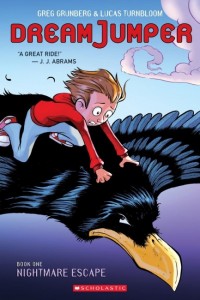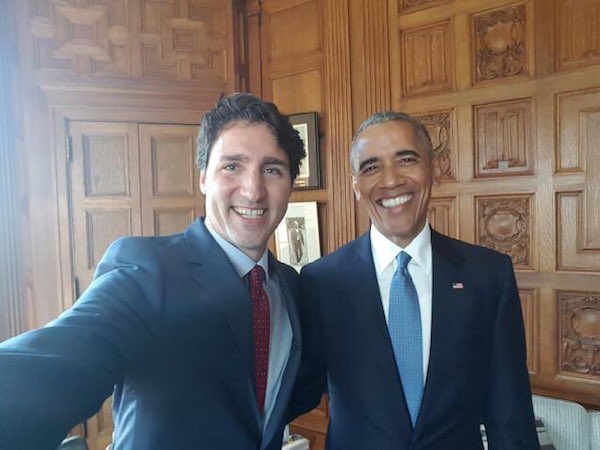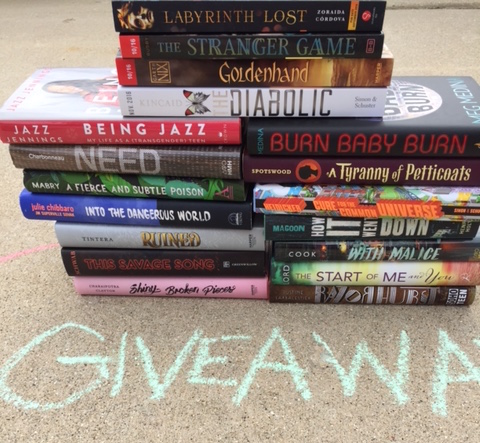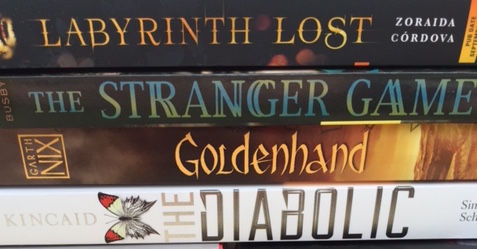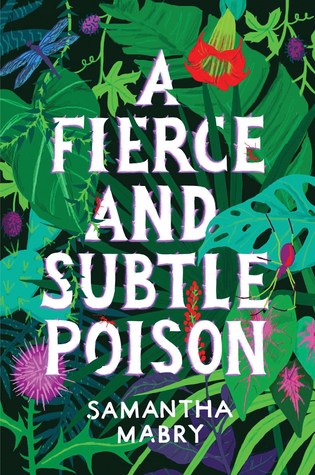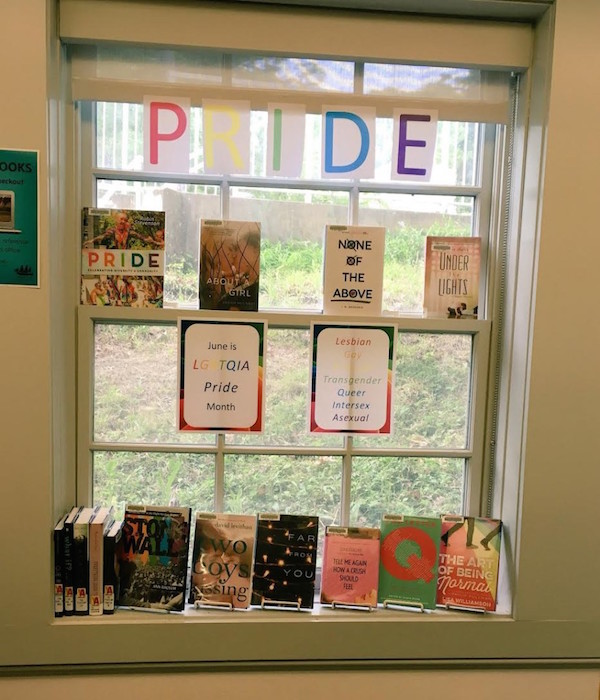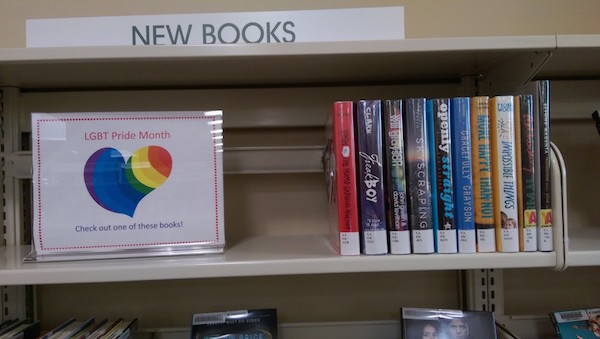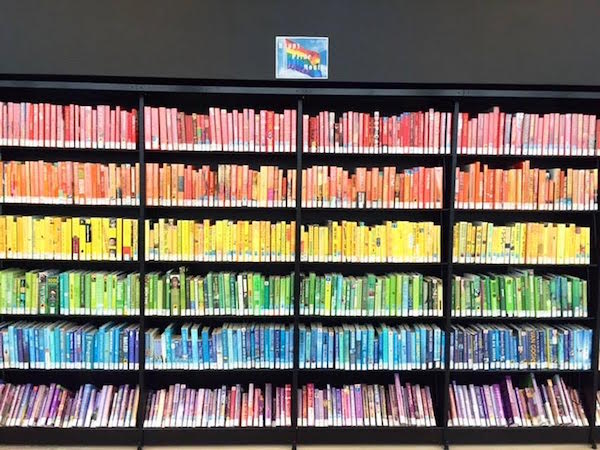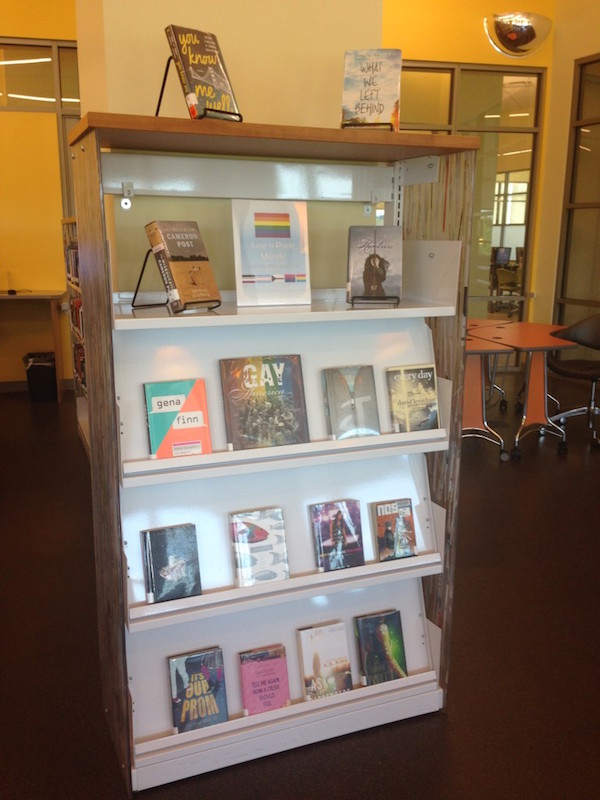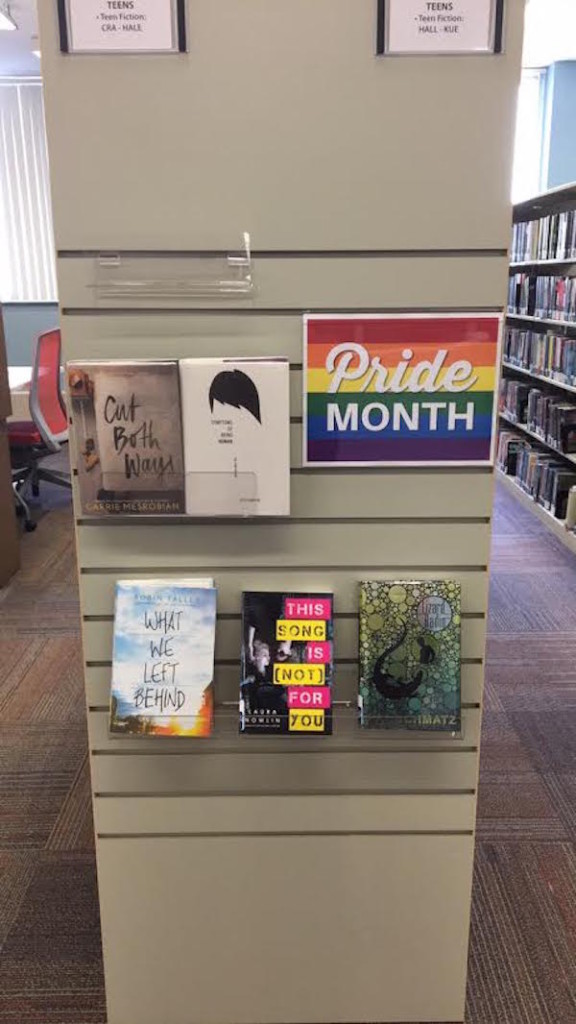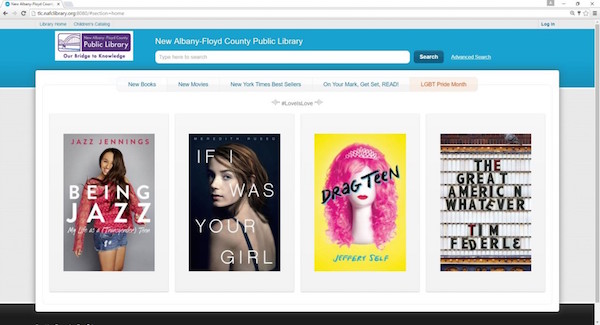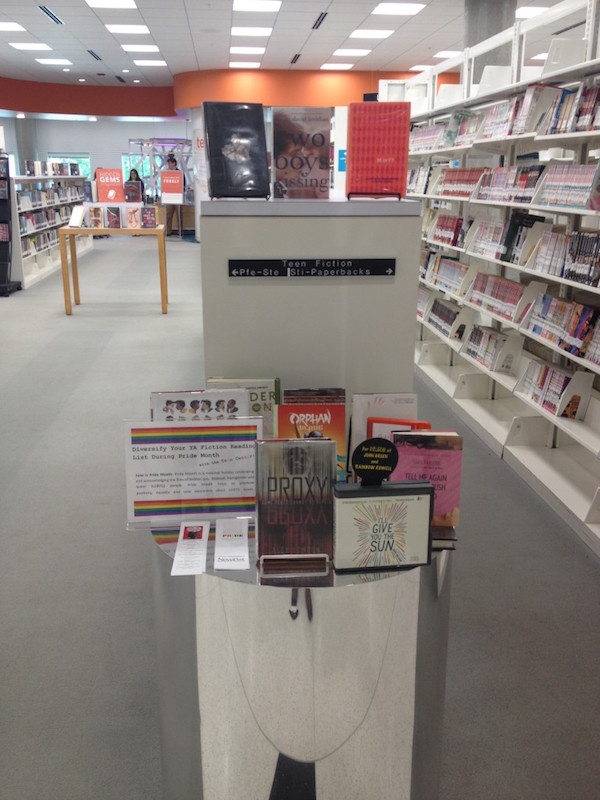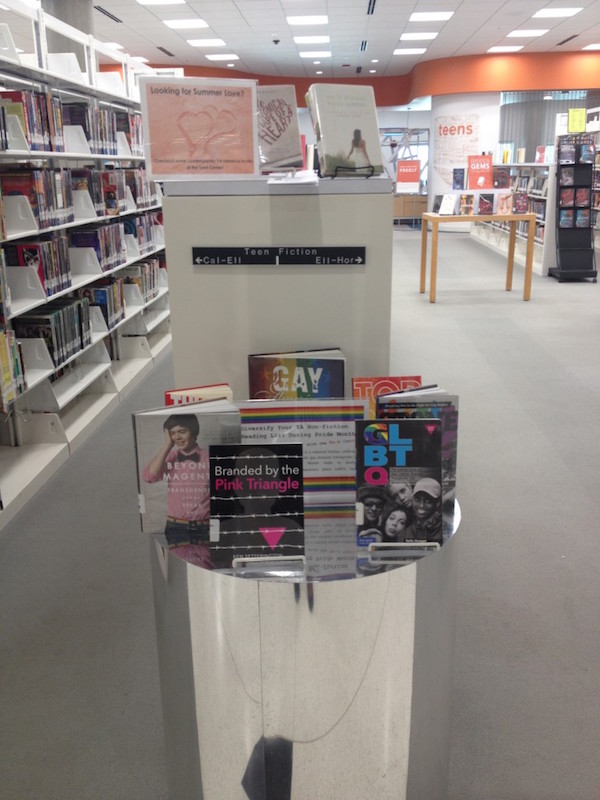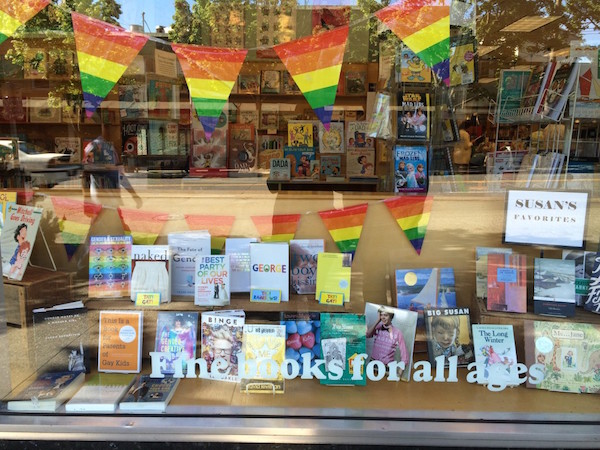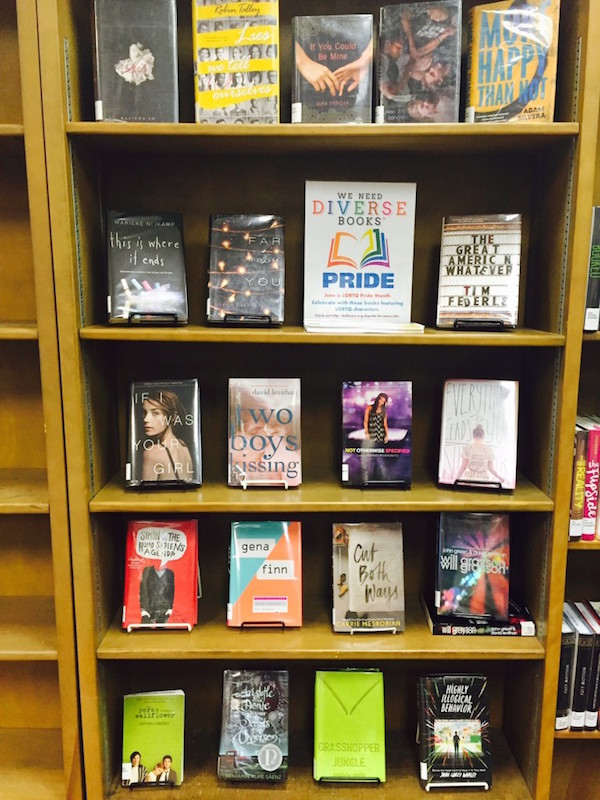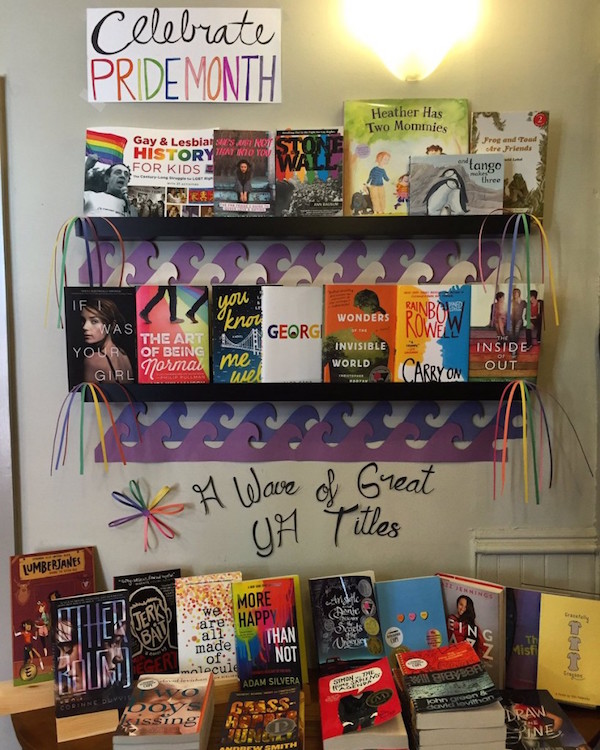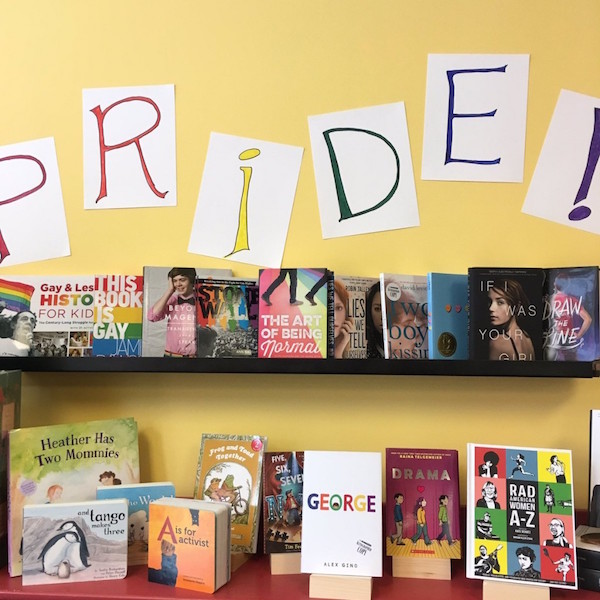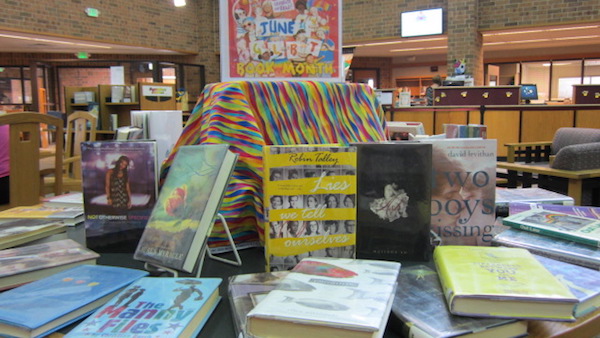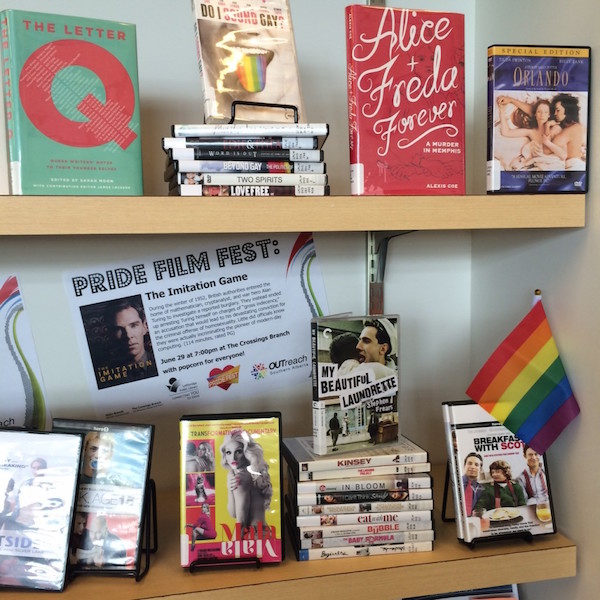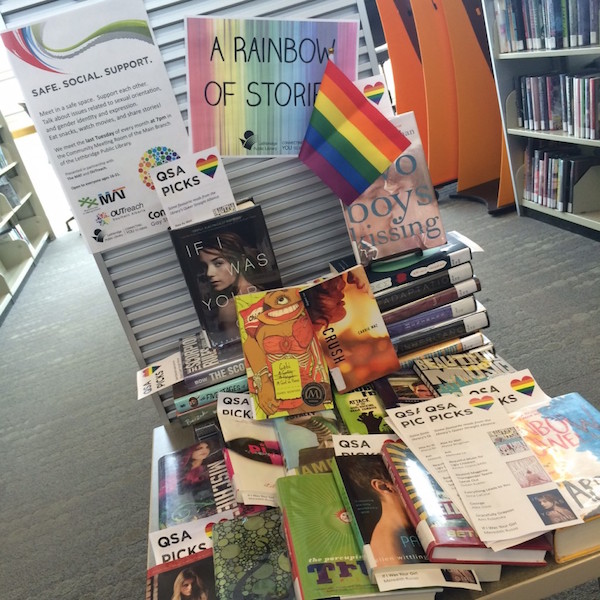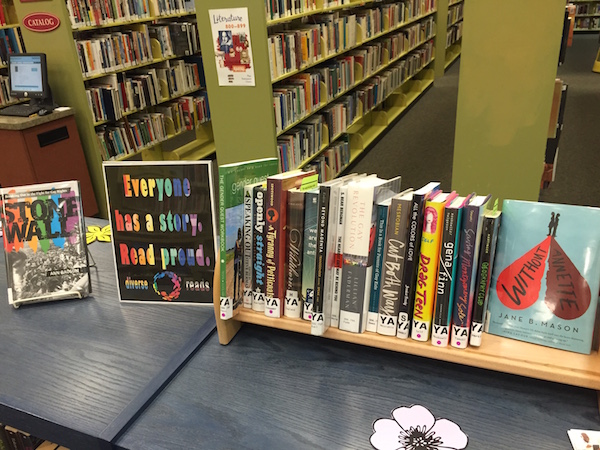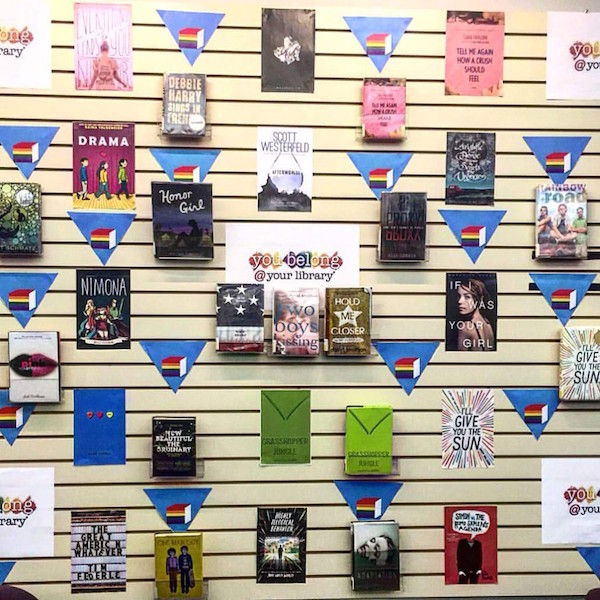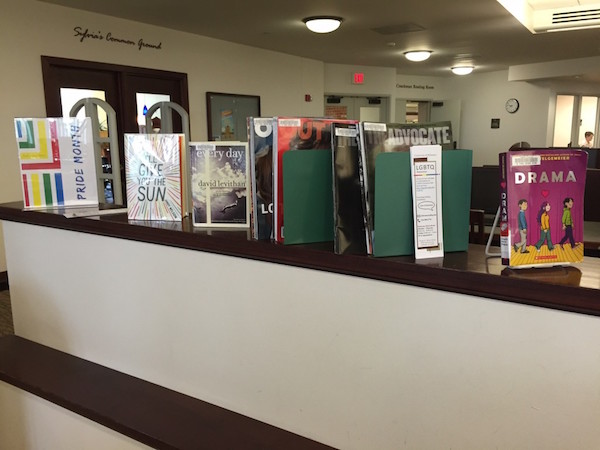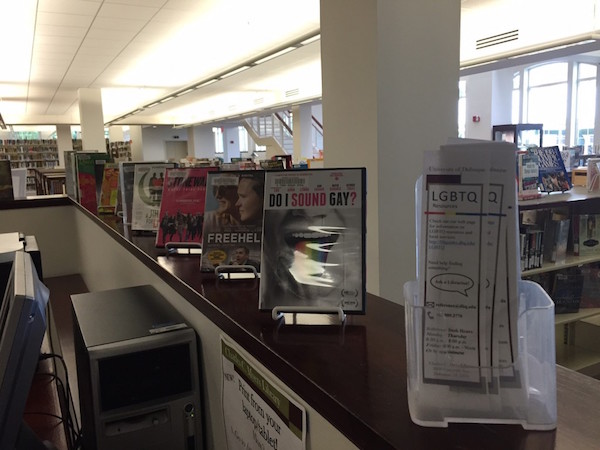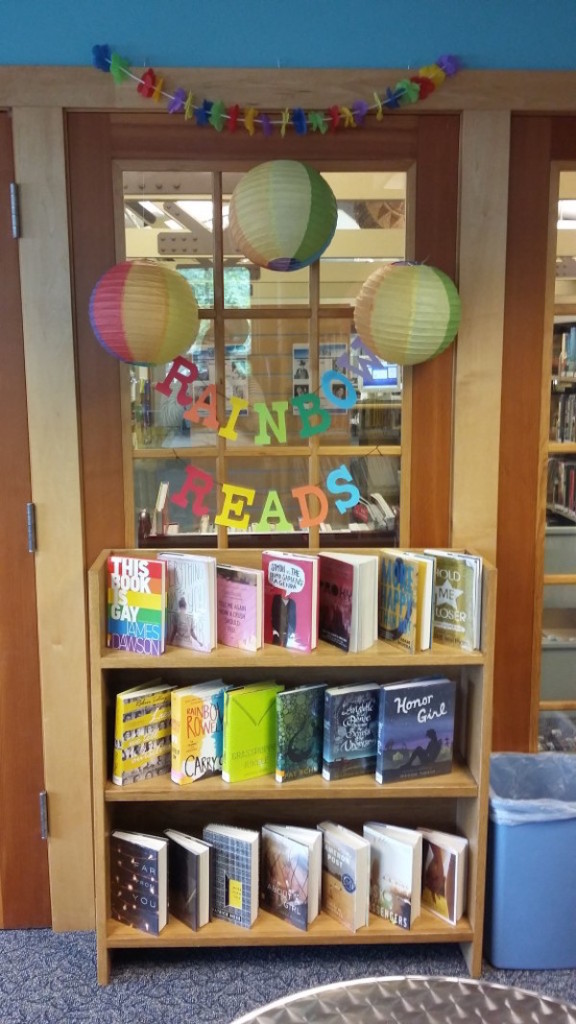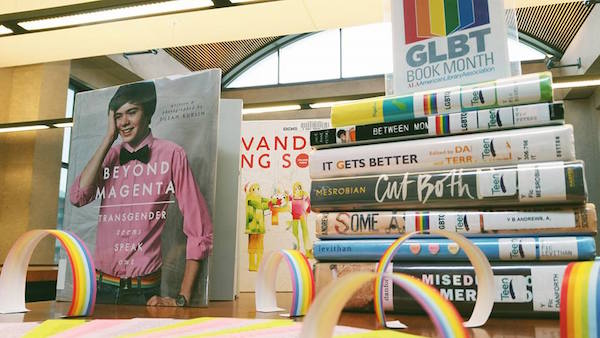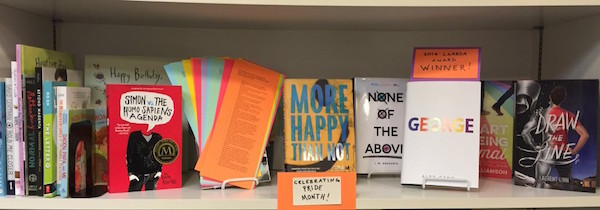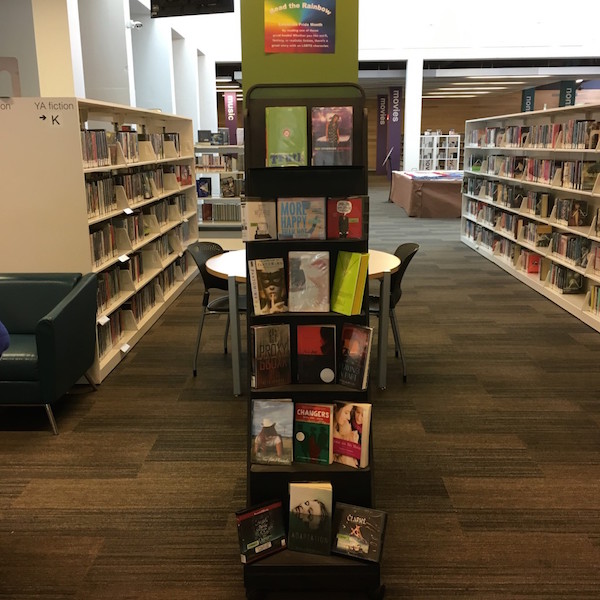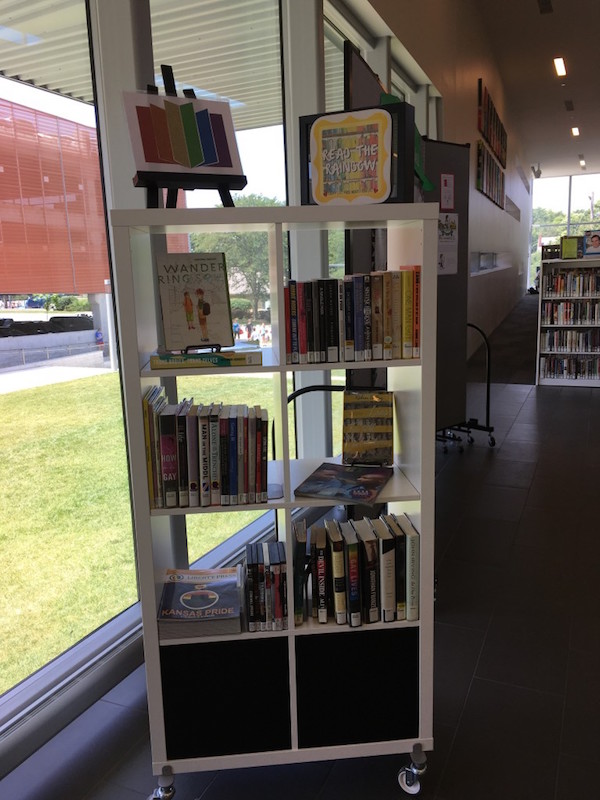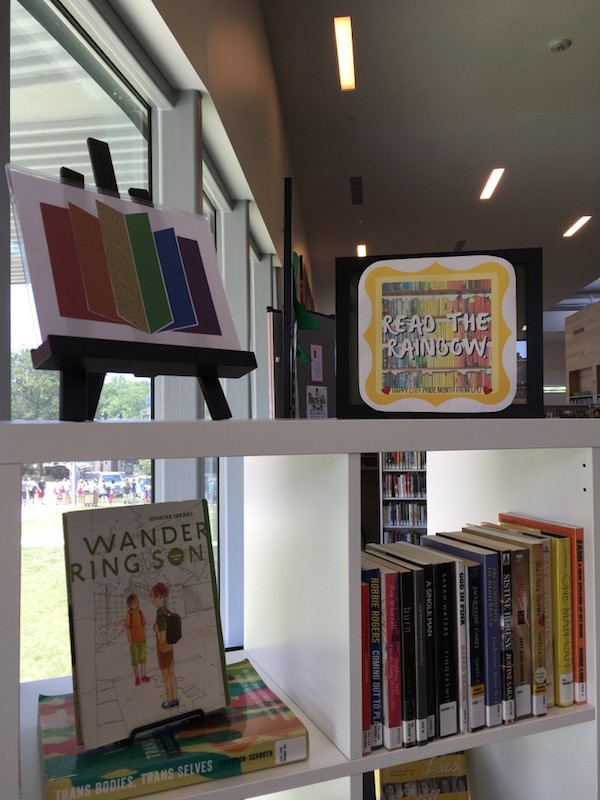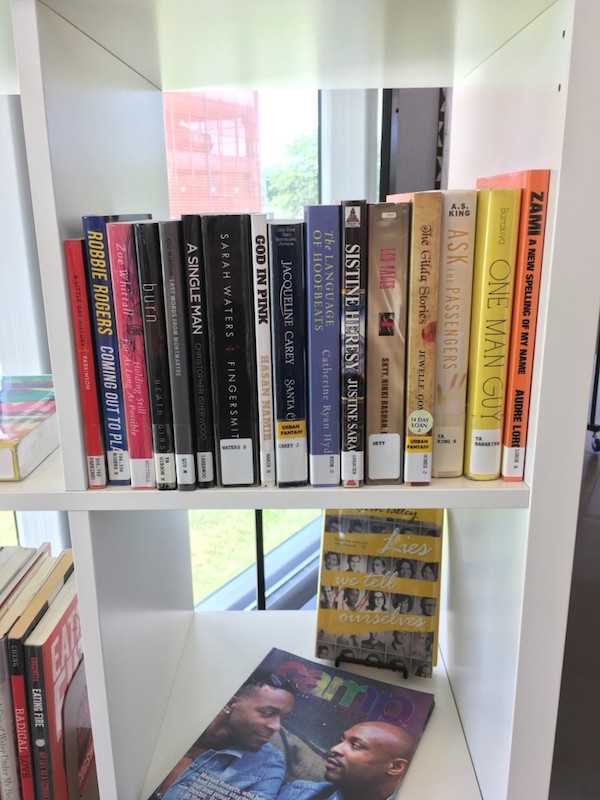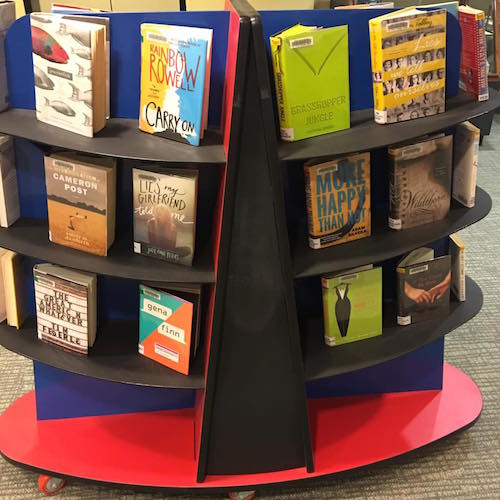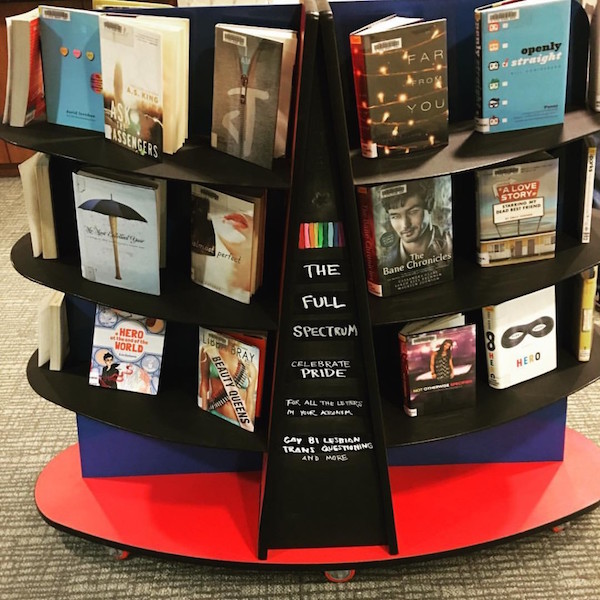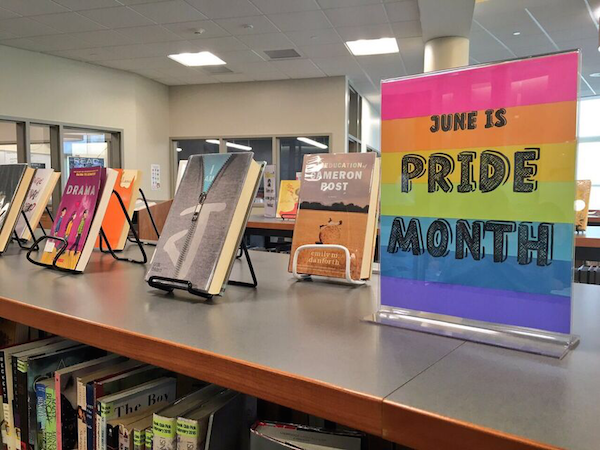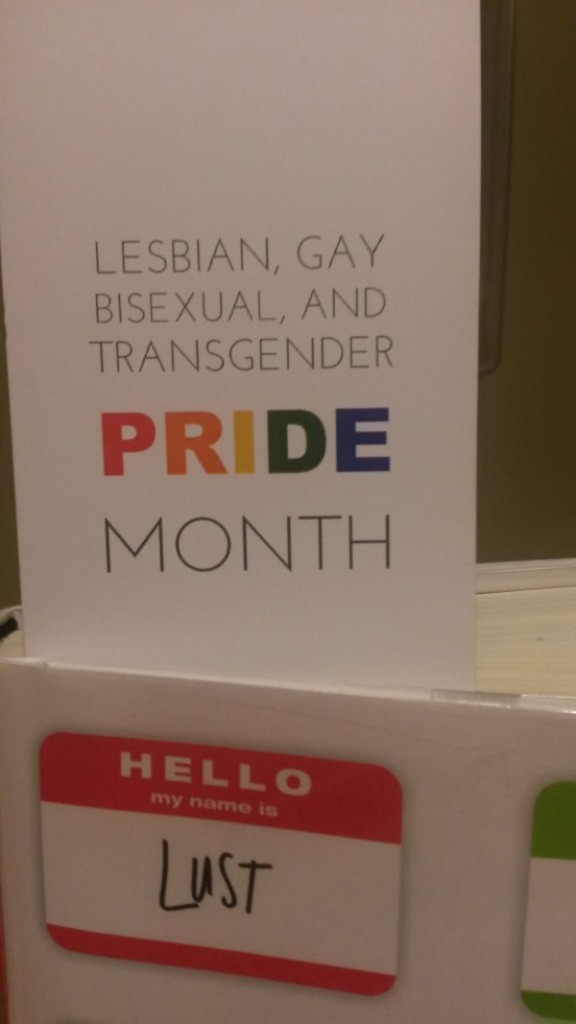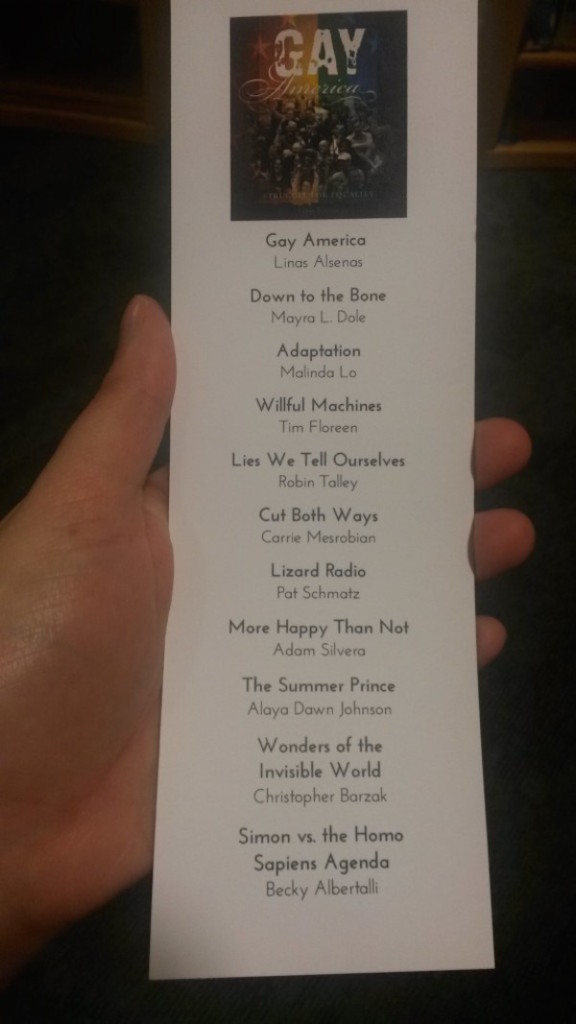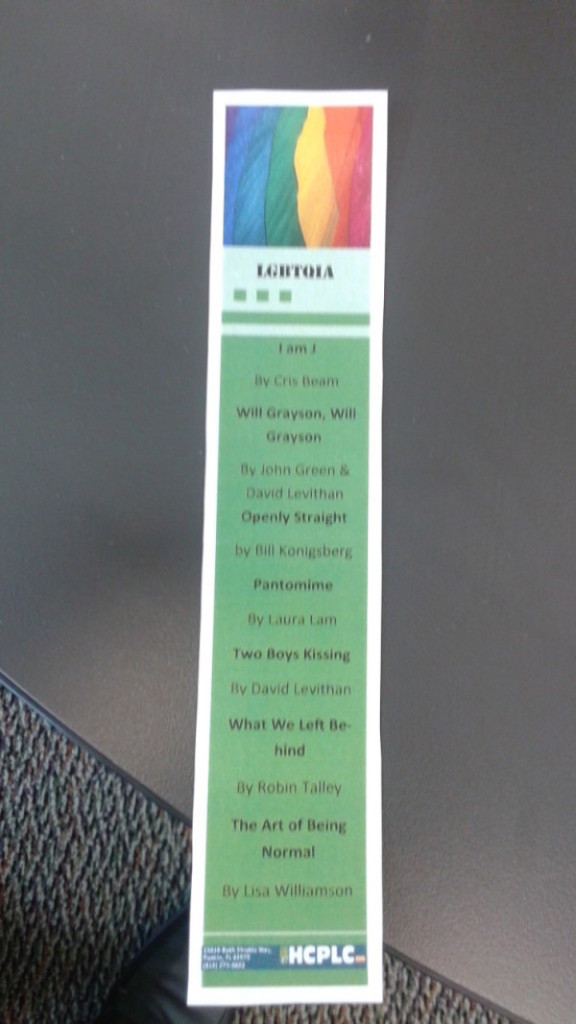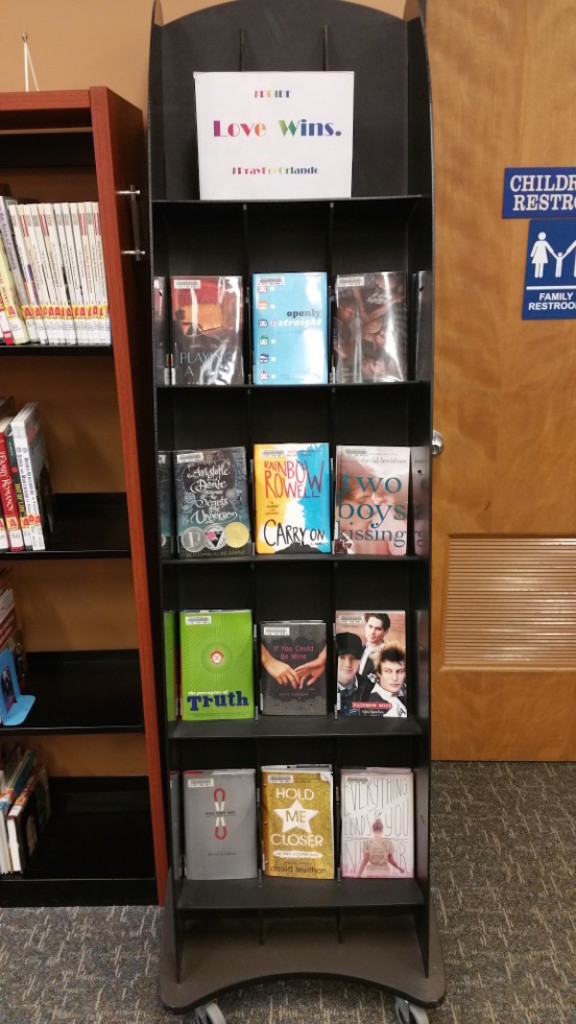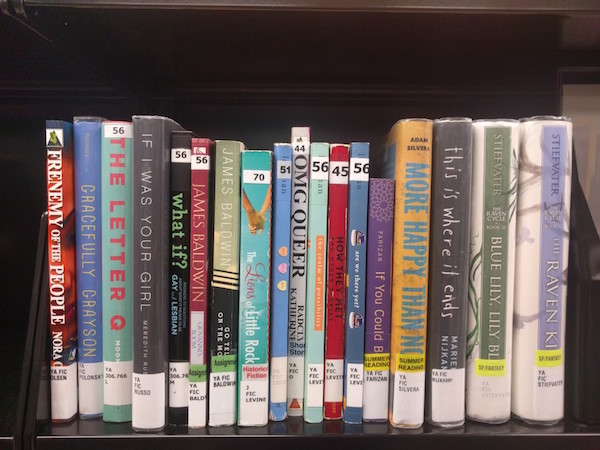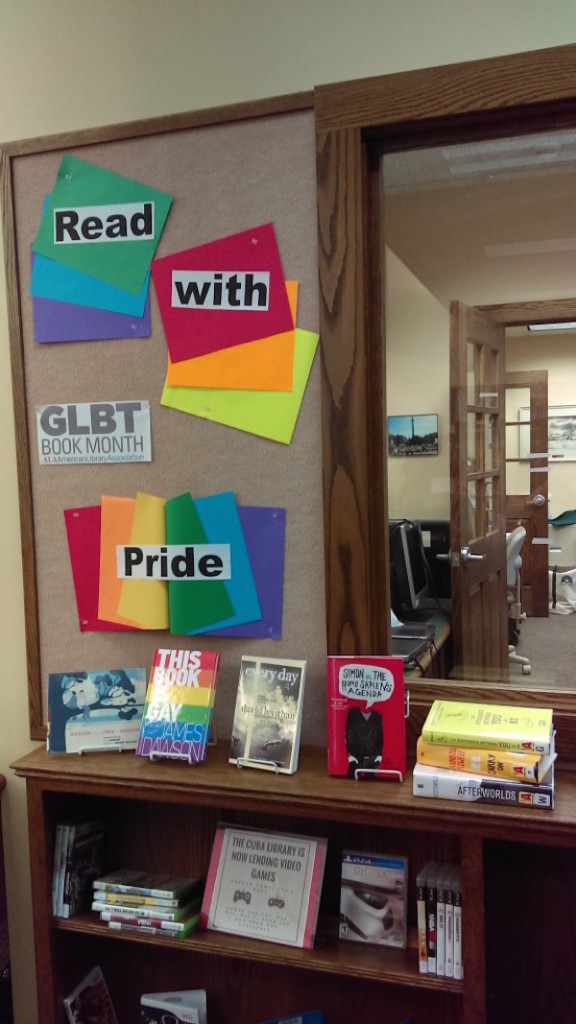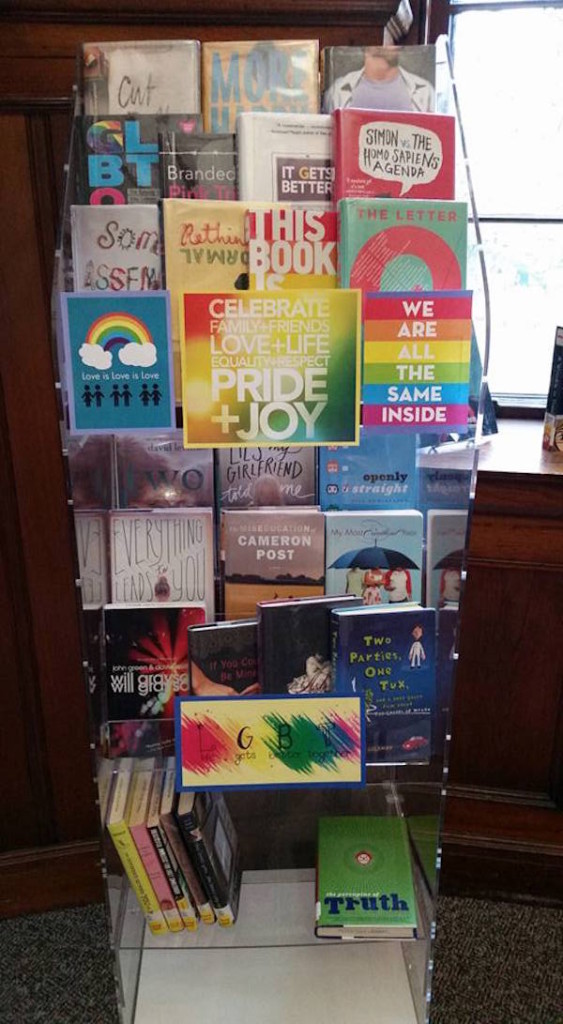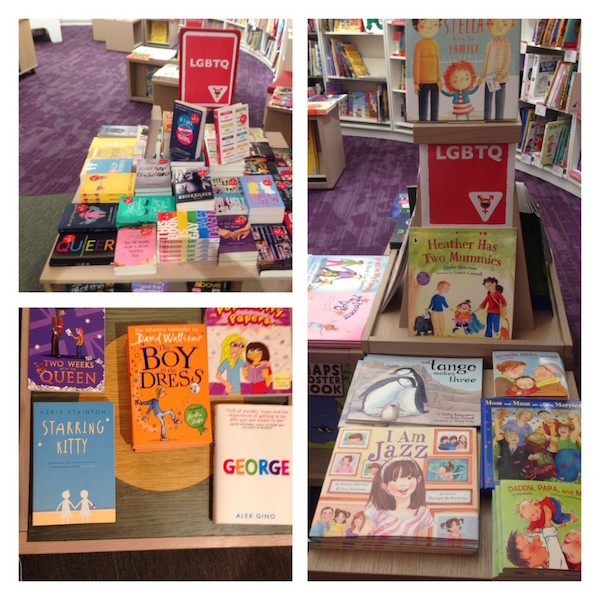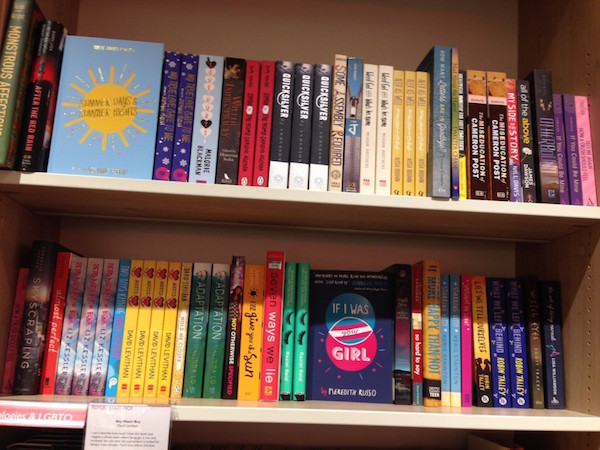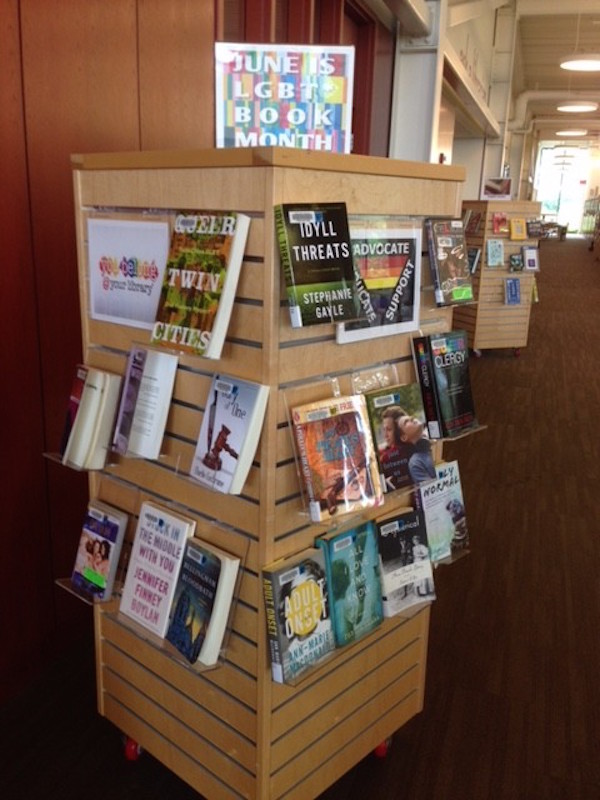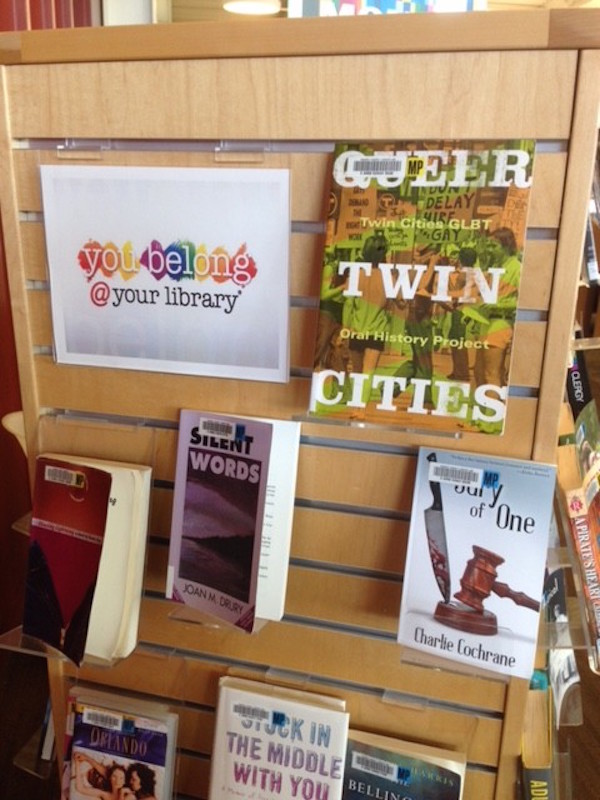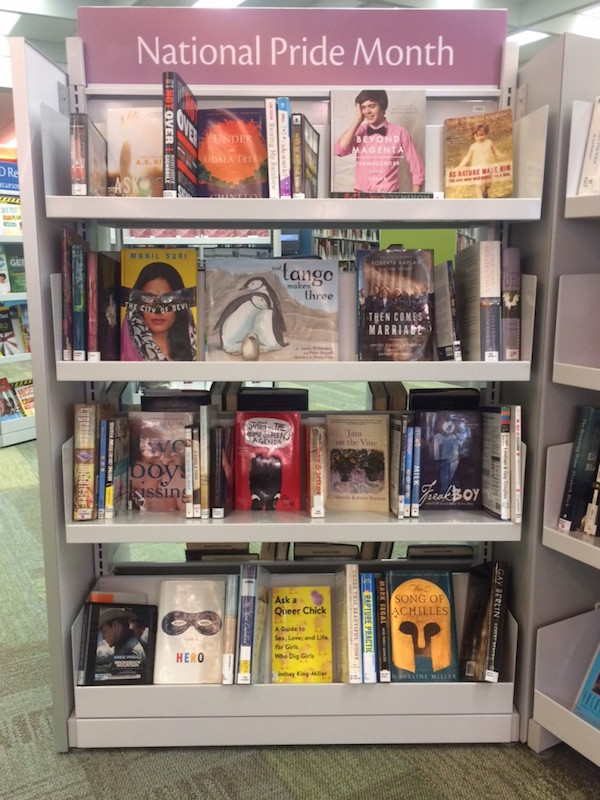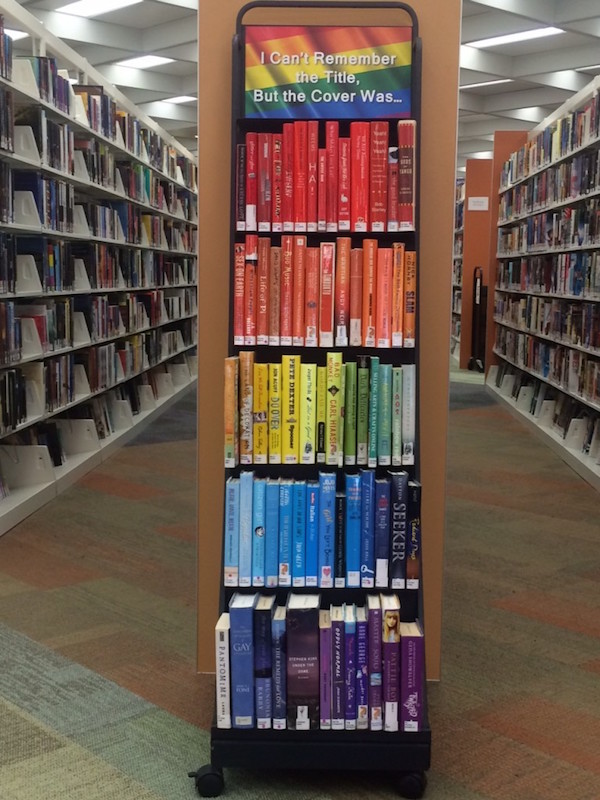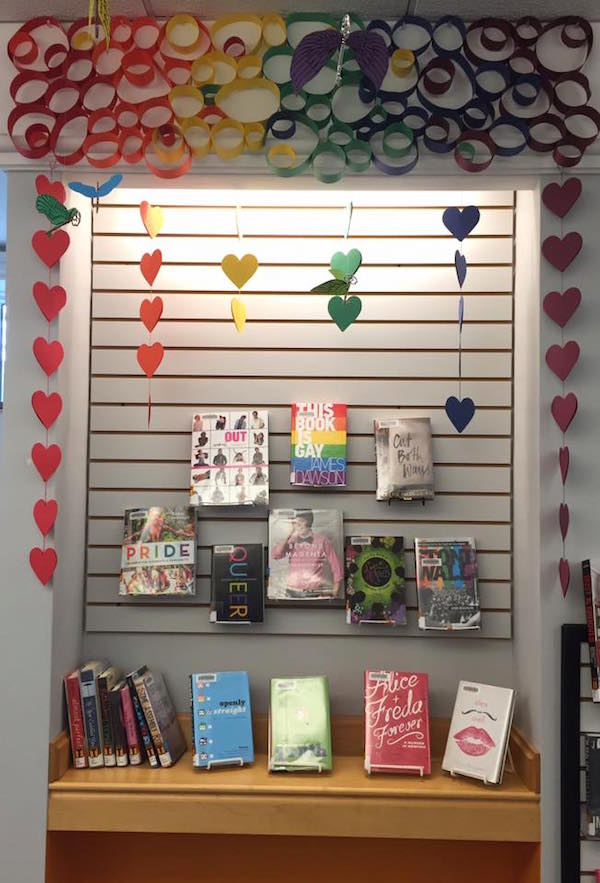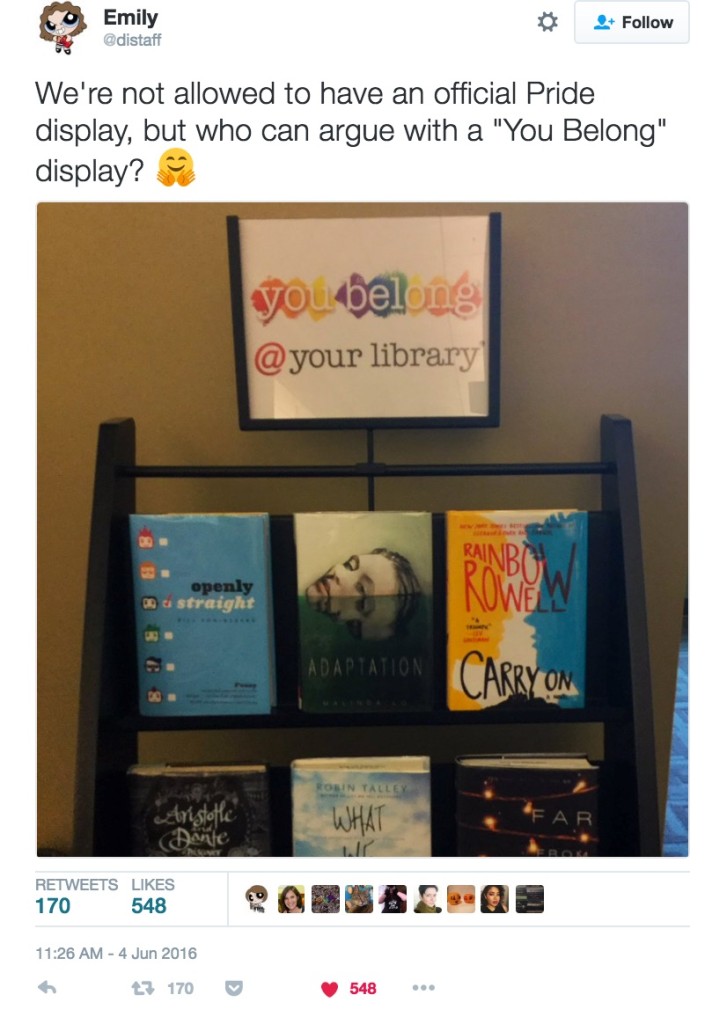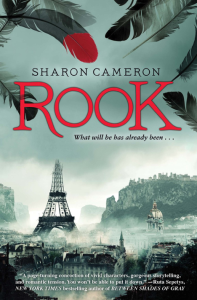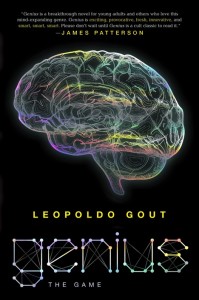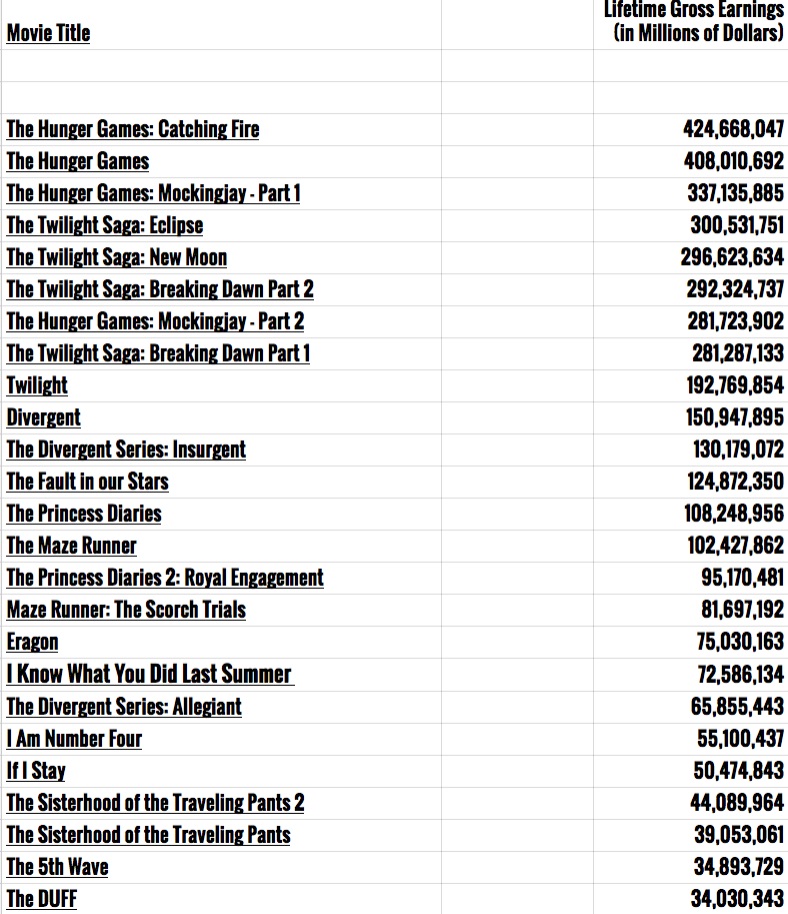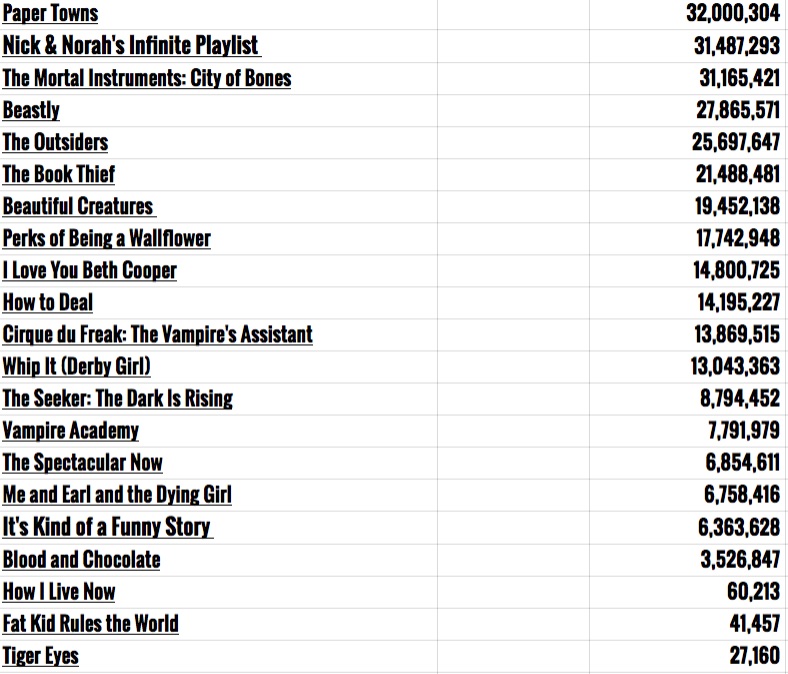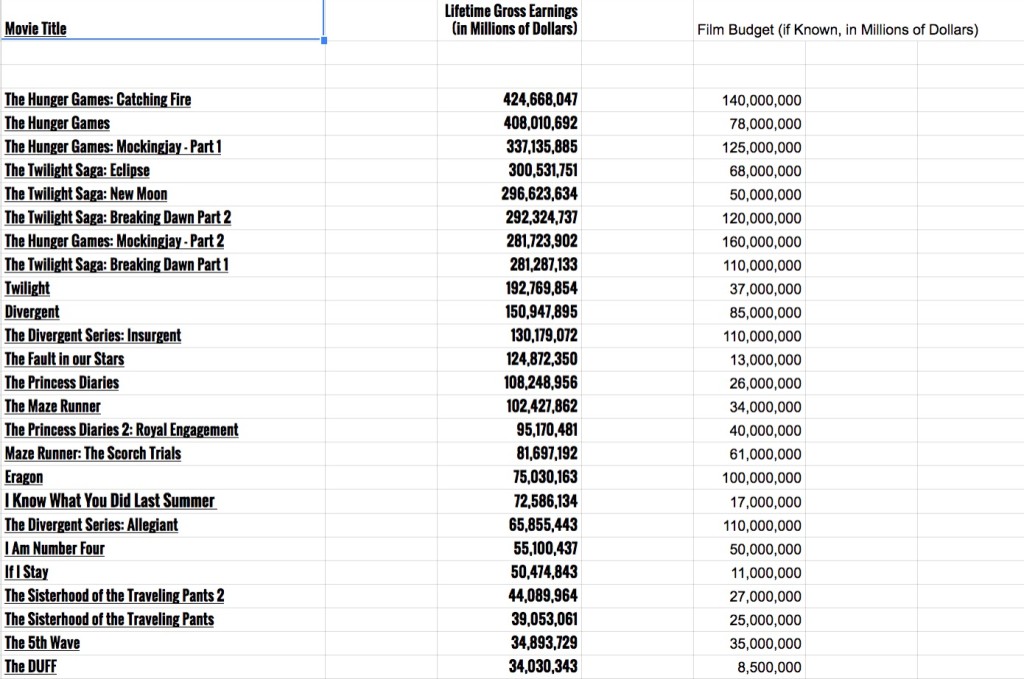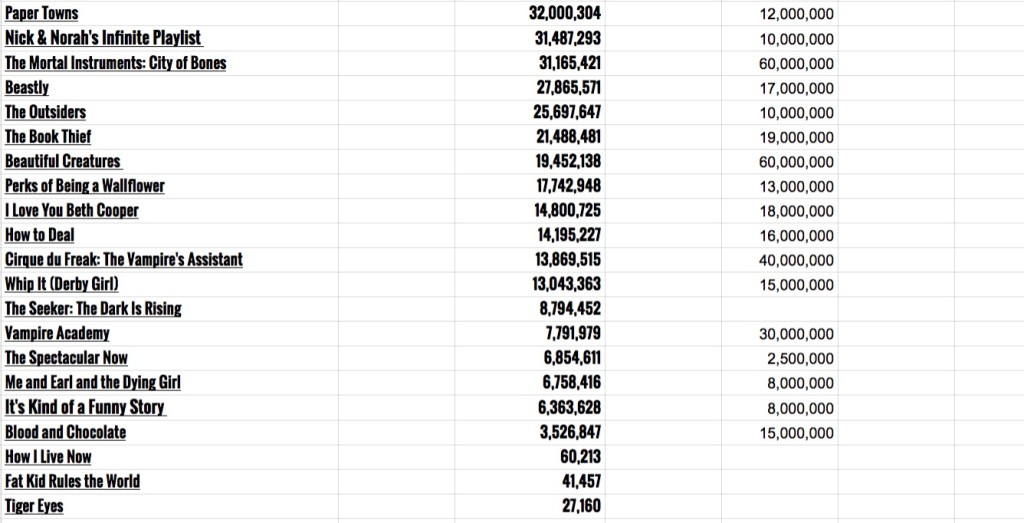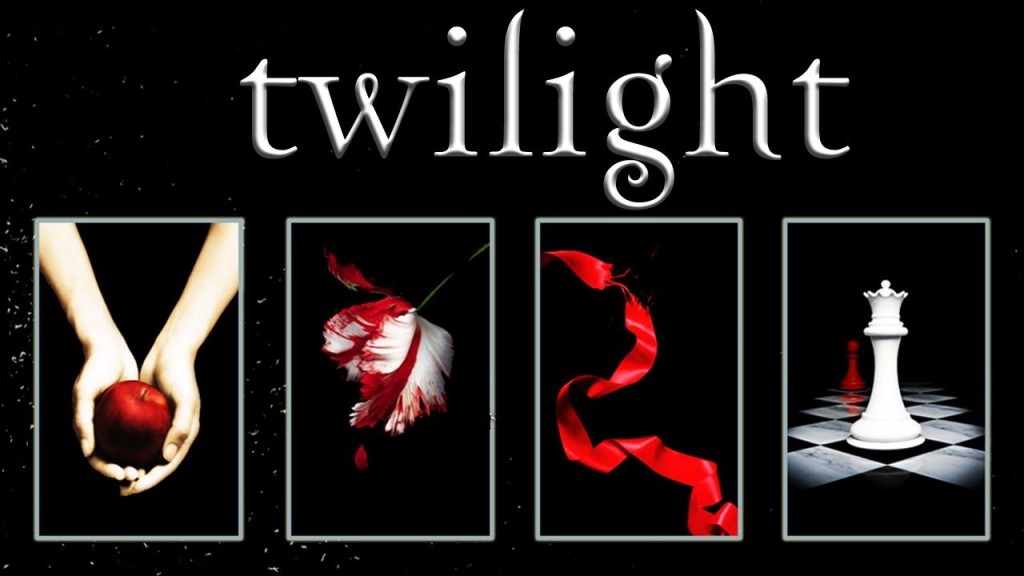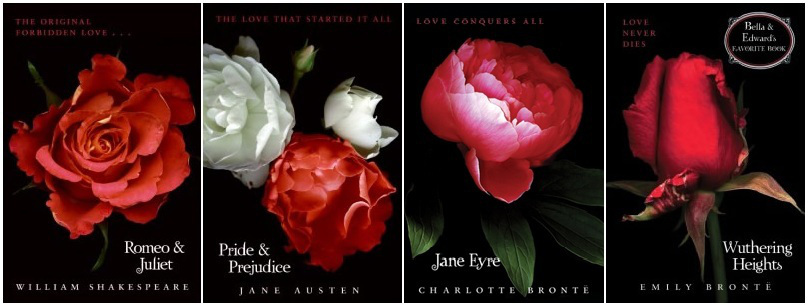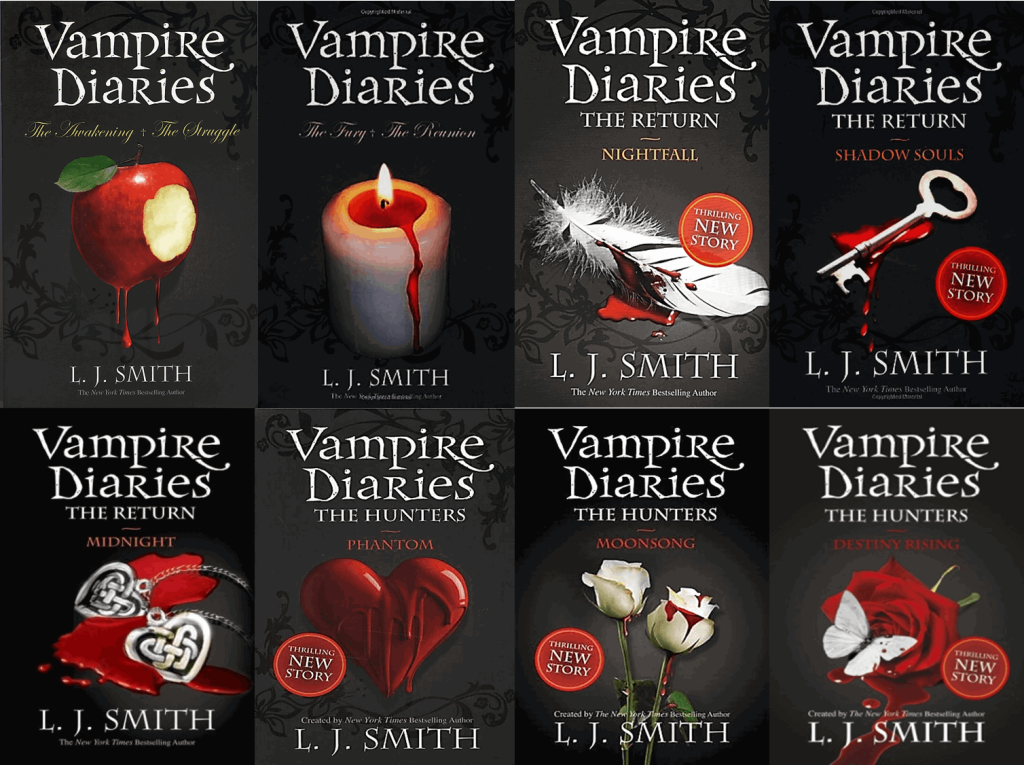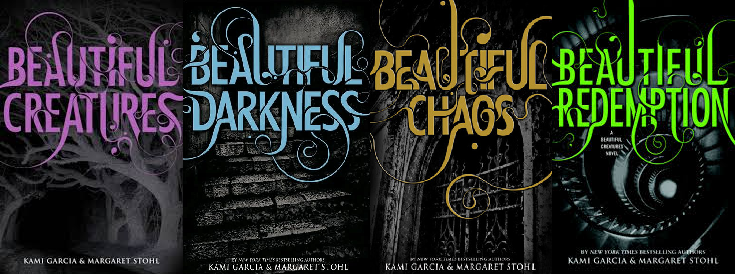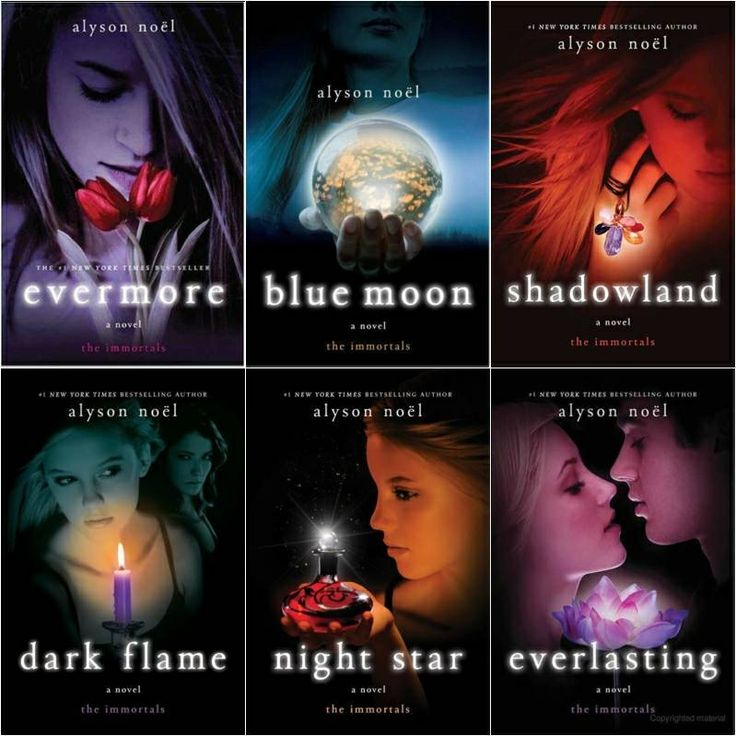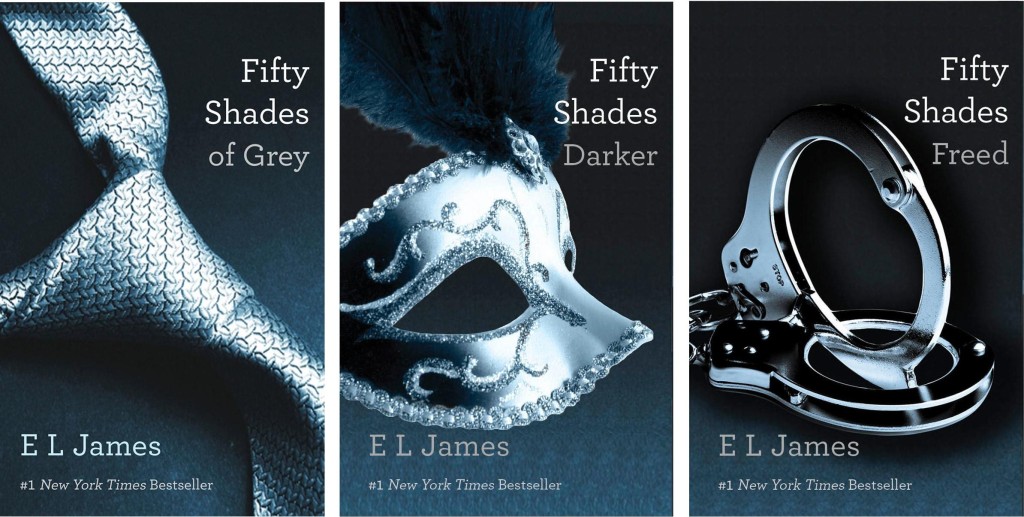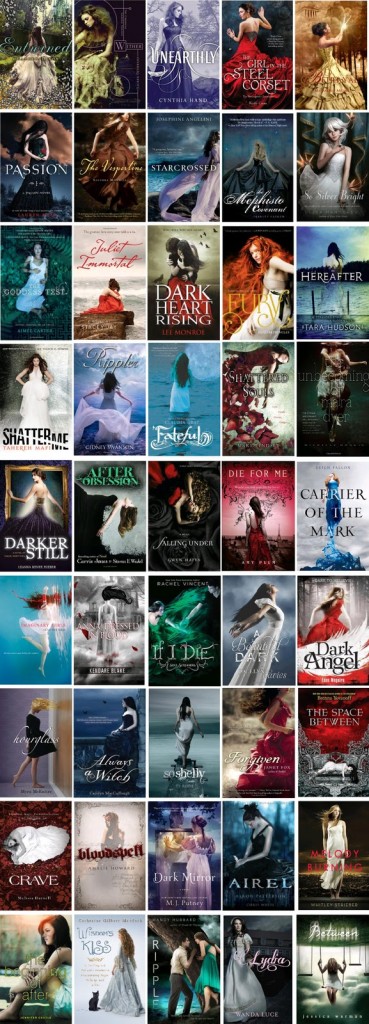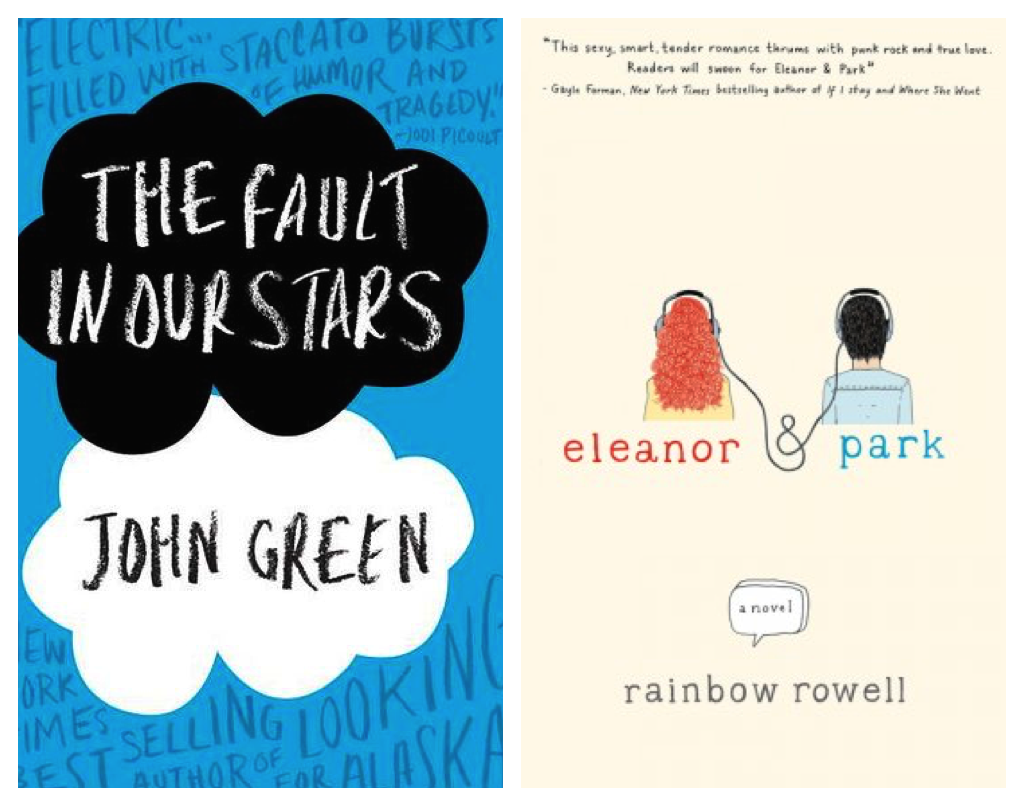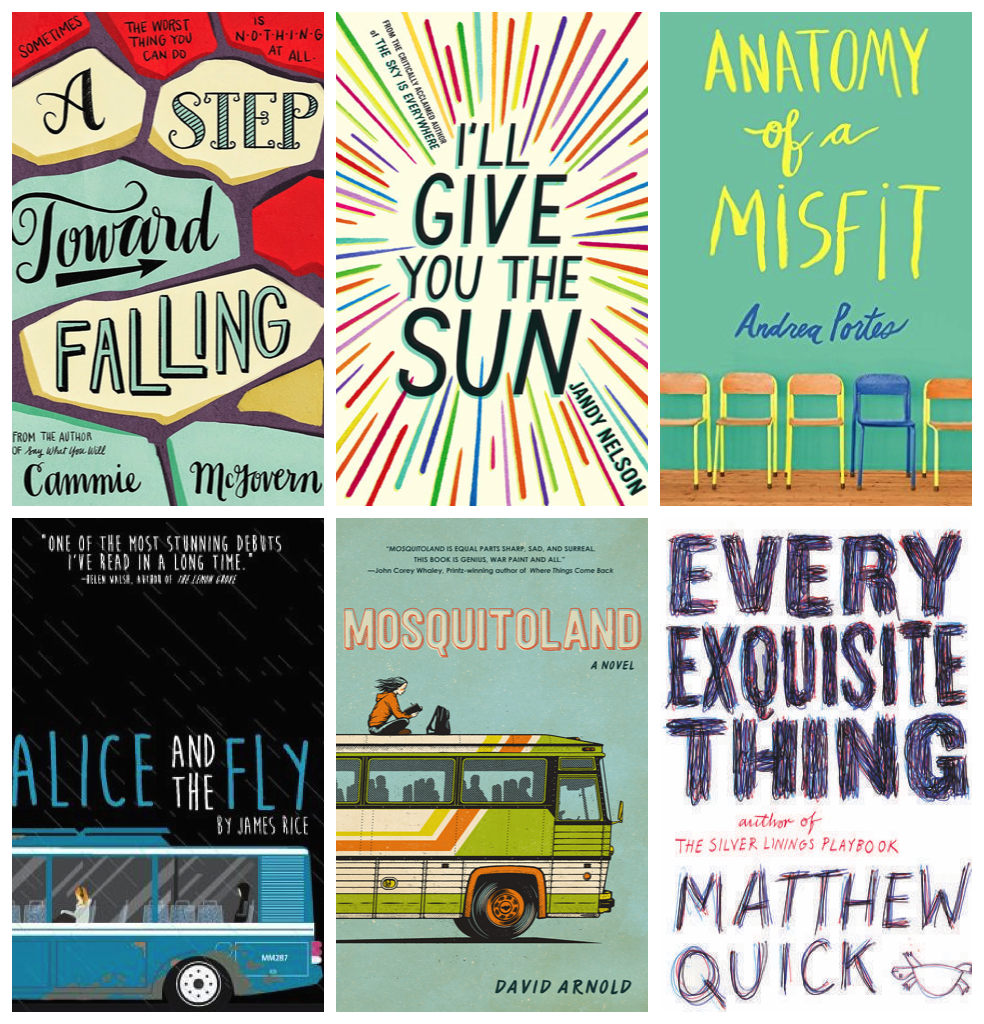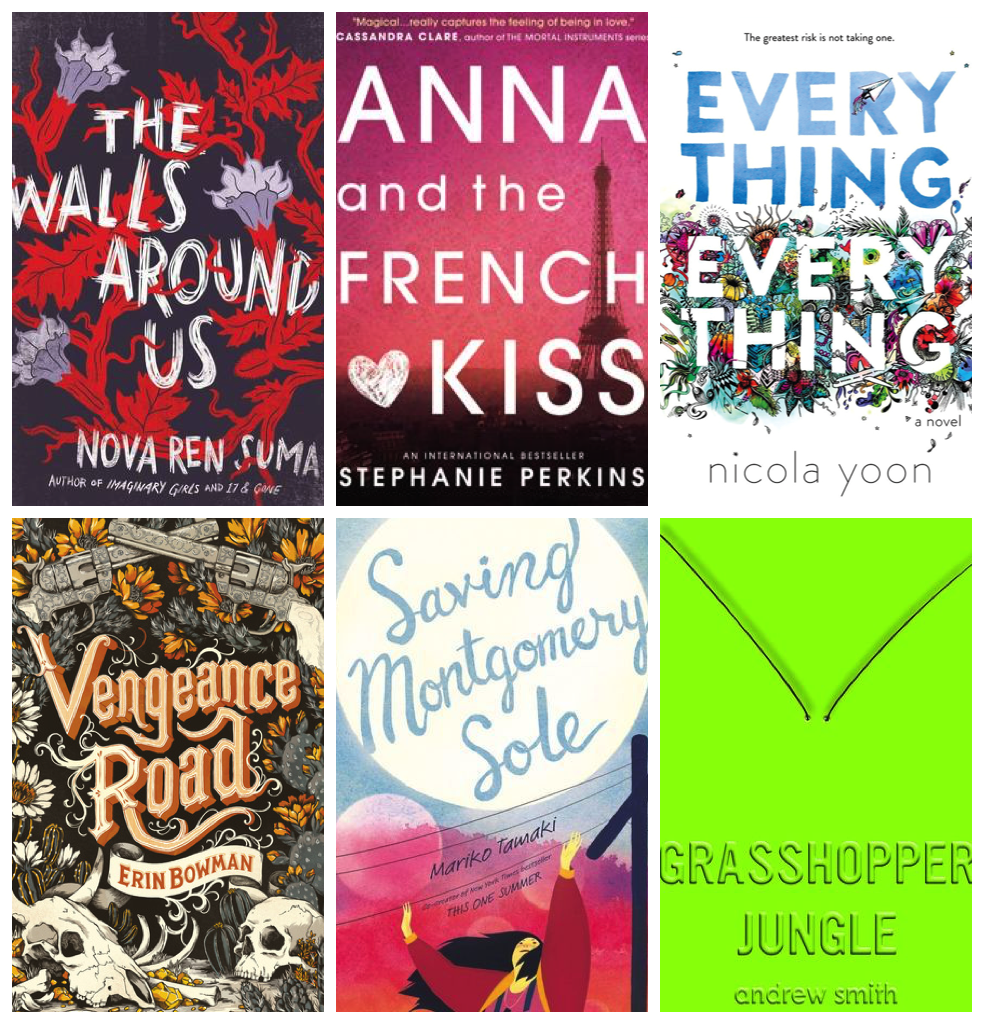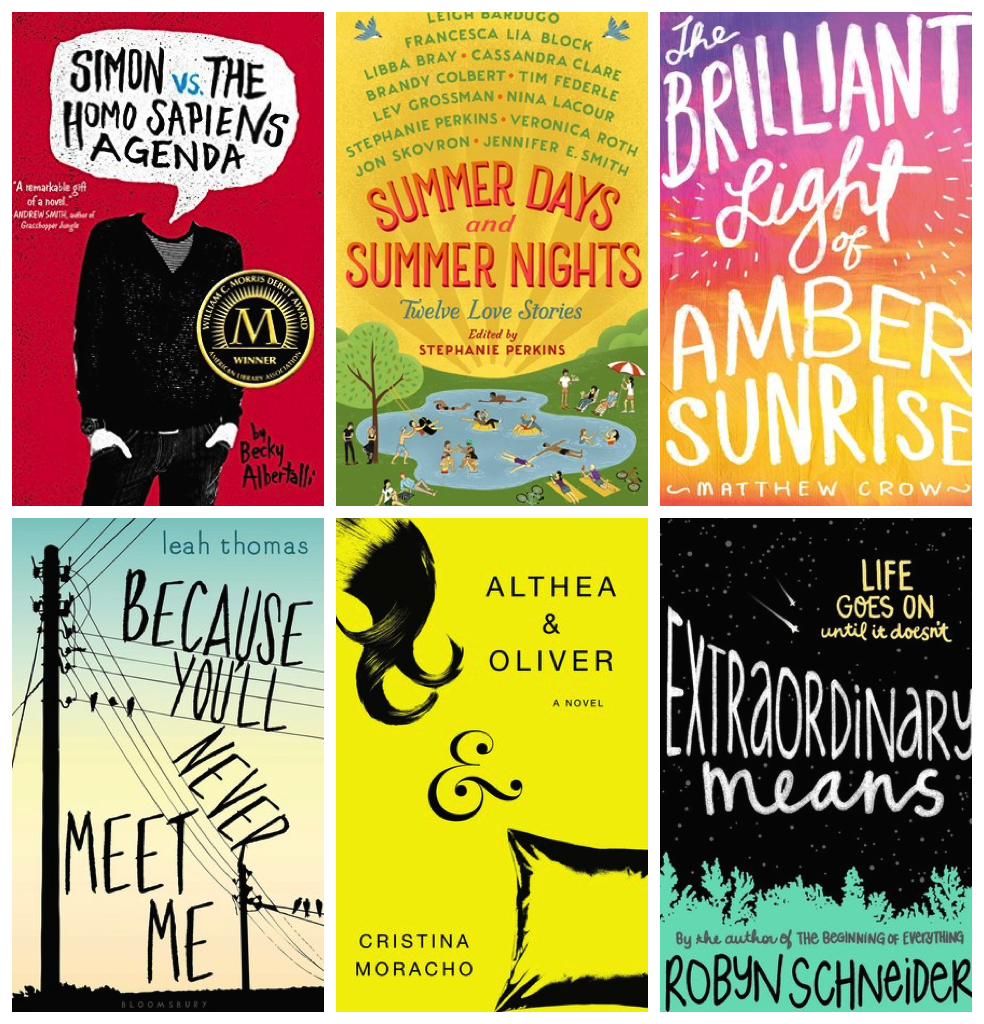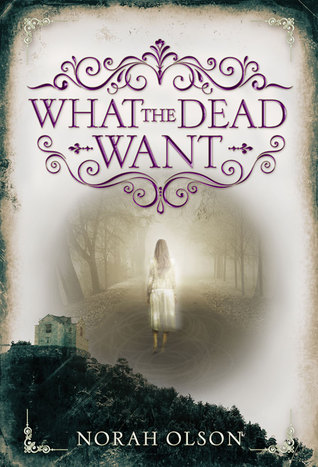 This week’s newsletter is sponsored by What the Dead Want by Norah Olson.
This week’s newsletter is sponsored by What the Dead Want by Norah Olson.
16 -year-old Gretchen’s passion for photography came from her mother Mona before she disappeared years ago. When Gretchen’s great aunt Esther calls unexpectedly to tell her that she has inherited a mansion on her mother’s side of the family in upstate New York, Gretchen understands nothing except that her aunt needs her help. But what she finds there is beyond her imagination. It’s full of secrets and ghosts of the past. The mystery of Mona’s disappearance and the evil that happened there during the Civil War are inextricably intertwined, and it’s up to Gretchen to figure out how…before even more lives are lost.
____________________
I’ve been putting off writing about diversity for “What’s Up in YA?” for a while now. Not that it’s not an important topic but rather, I want to find a way to talk about it that’s different, that’s urgent, that explores more than what we already know about how it’s vital. Being white, it’s not my place to be an authority on the topic; yet, it is my place to lift voices, to talk about why we need to be inclusive, and to talk about the books that aren’t getting the sort of support and praise and spotlighting that deserve it.
This week, in light of continued violence toward the black community, I couldn’t put off the topic any longer. There’s no need to be perfect and polished. It’s far more important to continue a dialog, as well as continue talking about the need for diverse books and more, the need to read, discuss, and champion books that invite a range of stories into our lives. Be them stories that are mirrors or windows, inclusive reads are what develop our senses of empathy, of understanding, and more, beg us to keep talking. And we need to keep talking.
But instead of doing the talking myself, I’ve invited a guest this week to talk with me. And instead of talking about the importance of diversity — we all know that it’s important — we’re digging into why exploring the diversity within diverse narratives matters, where and how we use our powers to share these stories with readers, and the ways in which we can seek out and find those inclusive YA stories that go beyond “easy reaches.”
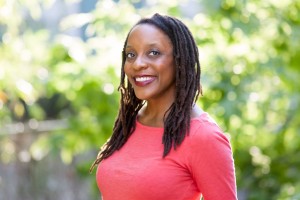 Welcome Brandy Colbert, acclaimed author of Pointe and the forthcoming Little & Lion (Little, Brown, 2017). Pointe was named a 2014 best book by Publishers Weekly, BuzzFeed, Book Riot, the Chicago Public Library, and the Los Angeles Public Library, and Colbert was recognized as a debut author to watch by Publishers Weekly. She also has a short story in the recently published Summer Days and Summer Nights edited by Stephanie Perkins and (full disclosure, I guess?), she has an essay about black girl friendship in my forthcoming anthology of feminist essays, Here We Are: Feminism for the Real World (Algonquin Young Readers, February 28, 2017).
Welcome Brandy Colbert, acclaimed author of Pointe and the forthcoming Little & Lion (Little, Brown, 2017). Pointe was named a 2014 best book by Publishers Weekly, BuzzFeed, Book Riot, the Chicago Public Library, and the Los Angeles Public Library, and Colbert was recognized as a debut author to watch by Publishers Weekly. She also has a short story in the recently published Summer Days and Summer Nights edited by Stephanie Perkins and (full disclosure, I guess?), she has an essay about black girl friendship in my forthcoming anthology of feminist essays, Here We Are: Feminism for the Real World (Algonquin Young Readers, February 28, 2017).
First, before we dig into talking about other books, can you give a quick description of Pointe and perhaps tease a tiny bit of what we could expect from Little & Lion?
Happy to! Pointe is the story of seventeen-year-old Theo, a black ballet dancer who’s aspiring to become a professional ballerina. Her best friend and neighbor, who disappeared from their Chicago suburb when they were thirteen years old, returns at the start of the book, and although he’s temporarily mute, Theo soon learns that she had something to do with his abduction.
Little & Lion is the story of sixteen-year-old Suzette, who was sent away to boarding school the autumn after her stepbrother had a mental break. When she returns home to Los Angeles for the summer, she’s struggling with her new romantic/sexual feelings for girls and whether or not to keep the biggest secret her brother has ever told her. It’s a story about blended families, loyalty, mental health, and sexuality, and features a main character that is black American and converted to Judaism at a young age.
One of the reasons I asked you to have this conversation with me is because your book is about a black ballerina, but it’s a story set in suburban Chicago, rather than in an urban area. I’ve been thinking a lot recently about how culturally, “urban” can be shorthand for “black.” And it’s hard not to think about how, when we talk about great books by and about black people for young readers, the titles that immediately come to mind are *also* stories that are urban. But we know that the black experience is so much more than an urban one. Why do you think it’s so easy to consider one experience *the* experience?
This reminds me a lot of the brilliant Chimamanda Ngozie Adichie’s speech “The Danger of a Single Story.” I think a lot of people interpret her message as recognizing the need to read inclusive stories, those that present narratives from the perspective of marginalized groups—which is absolutely true. But another part to that is we need diversity within diversity.
I think so many consider one experience the experience because they haven’t had any others to turn to in real life. Or, even if seeking out stories different from their own, they might find it easier to skim the surface and read only those books or stories they’ve been told are the best.
To me, changing this starts with the gatekeepers—editors, sales and marketing departments, librarians, and book bloggers—whose opinions all trickle down to readers. If those groups are championing and then promoting only a certain type of book from a group, those are the books that are going to get more marketing dollars and in turn gain a larger readership.
This isn’t to say these stories aren’t important or great on their own—so many of them are. But it’s dangerous to promote only one type of experience within a marginalized group as the one that needs to be represented. I’m black, and I cannot tell you how many times I’ve had to point out that black people aren’t a monolith. I don’t think you’d know that by the types of children’s books with black main characters that are most often touted as must-reads.
This leads me into my next question, which is this: we know we need diverse books. And we need diverse books because that’s reality, not because it’s a marketing tool nor a cash grab (both of those things having been claims leveraged against the movement, against publishing, against authors — you name it — and we know those things aren’t reality). The more openly discussed this topic is, the more we’re willing to talk about the books that are out there, as well as the books which are coming. But we also need to ensure when we talk about diverse books, we’re talking about diversity within those books, too; we need to see black girls who are ballerinas and we need to see Latino boys who live in rural America. We need to see disabled teenagers who save the world and we need to see black boys who are geeks and dressing up to take part in Renaissance Faires. We don’t want to ignore how important books that explore lives that we think of when we think of certain groups, but we also don’t want to ignore those stories about lives that differ from popular cultural perceptions. How can we balance those things? In what ways can we ensure when we talk about diverse books, we’re also exploring the diversity within those stories?
Again, to me, this goes back to the gatekeepers of the children’s book industry, who are primarily white women of a certain class. I think they need to ask themselves why they’re most often promoting books featuring black kids and teens who live in urban areas and/or are dealing with crime, gangs, etc. Or, in the case of historical novels, why those given the most attention tend to deal with black people who are enslaved or working to overcome the effects of slavery as the focus of the novel. Is it because these stories are the ones they’ve seen portrayed most often over the years and so it’s ingrained in them that these are the ones worth telling? Is it because these stories spark the most empathy in them? Sometimes I wonder if it’s because they don’t have many black friends, acquaintances, or colleagues in their own lives, and so it may be harder for them to imagine a black person as the hero of a story that’s not built around overcoming oppression.
(I’m specifically speaking to books featuring black characters because that’s the community I belong to; the need for diversity within diversity most certainly applies to other marginalized groups.)
And again, we need these stories. But we need more than these stories not only on the shelves, but given equal attention when it comes to promotion and booktalking. We need to see and celebrate more carefree black kids living their lives on the page. I’d especially like to see more stories about black kids who live in suburban or rural areas. Because while these kids’ stories are not necessarily about being black, trust that they are still very much living the life of a black person.
I grew up in a town in Southwest Missouri that was about 3 percent black when I was a kid and is still predominantly white today. My family was middle-class and I feel lucky that I had an excellent, fulfilling childhood. I excelled academically, was heavily involved in school activities, and spent my free time with the popular crowd. But this doesn’t mean I didn’t experience racism, both covertly and overtly, for the 22 years I lived in that town. I can quickly run down a handful of examples without having to think hard about them, including my car being vandalized with a racial slur; families of the same class as mine assuming that because we were black, my family was unable to afford a nice meal out; and people forcing their kids out of the public pool when I dared to get in. I remember these instances clearly and they are still painful, decades later.
But those racist acts and microaggressions weren’t the whole of my life. So when I write about black characters living in primarily white neighborhoods or suburbs, I include those moments as part of the story but not the intent of the narrative. Since I was a young kid, there’s always a white person quick to point out how “not black” I am, though I have brown skin, kinky hair, and examples like the above that clearly prove that’s untrue. Not to mention that I’m quite proud to be black, so I find that statement insulting, as if being black is something I wouldn’t want to be in the first place. But to them, being black is one experience: living in urban areas, living in poverty, speaking a certain way that some people have deemed unacceptable. It’s lazy and offensive on their part, yes, but is it any wonder they think this way when the only images they’re given of black people fit a single story?
I hated that I didn’t have other people my age to talk to about race-related issues. Though I’ve always had great groups of friends, I grew up feeling incredibly isolated because I was so often the only one. There were five black kids total in my high school graduating class of almost 300 students, and I didn’t start to meet other people who grew up like me until I was in my mid-twenties. I would have been ecstatic to have even one book that portrayed an experience like mine when I was a tween or teen, especially. I would have loved to know that someone else understood what it felt like to grow up as a black kid in an extremely white town in the Midwest.
I’ve always been fascinated by the desire to go for “easy reach” titles. I’ve written about this before on my own blog, and more specifically, how when people ask for book recommendations, they’re given titles that are popular, that sit on bestseller lists, and that have money behind them to get them out there. There is nothing wrong with these books at all, but the reach is easy. In a lot of ways, it seems like this happens with diverse books, as well. There’s nothing wrong with going for award winning diverse titles nor those with great marketing behind them (we love Jason Reynolds and Nicola Yoon, to name two, for a reason — great appeal, great writing, stories that serve as both windows and mirrors for a wide readership), but why do you think it is some books that are just as powerful don’t see the same sort of reader recommendation/passion behind them?
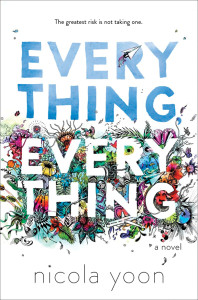 Regarding the lack of diversity within diversity, I do think things are getting better, if one book at a time. Nicola Yoon’s Everything, Everything is a lovely romance featuring a biracial girl who is half black and half Japanese, and was one of the biggest books of 2015. I’d like to see this type of attention expanded more, though. I want to see stories promoted with carefree black kids, with black kids who mess up, with black kids who live in rural areas and suburbs and don’t know how to dance or are terrible at basketball or have lived various types of sheltered lives.
Regarding the lack of diversity within diversity, I do think things are getting better, if one book at a time. Nicola Yoon’s Everything, Everything is a lovely romance featuring a biracial girl who is half black and half Japanese, and was one of the biggest books of 2015. I’d like to see this type of attention expanded more, though. I want to see stories promoted with carefree black kids, with black kids who mess up, with black kids who live in rural areas and suburbs and don’t know how to dance or are terrible at basketball or have lived various types of sheltered lives.
As for easy reach titles, this has always confounded me. When I was a kid, after I’d read all of an author’s popular books, I’d immediately scoop up their lesser-known titles. One of my favorite parts about getting the Scholastic catalog was finding authors I’d never heard of and ordering their books based on the summary alone. That could also be why I found myself bored in most literature classes, even through college, knowing the teachers would not (and probably could not, in some cases) stray from the reading lists they’d been including in their syllabi for decades.
I’m a writer but still an avid reader. While the “big books” are always on my radar and I often read them if they sound interesting, I find myself looking through backlists or picking up the books that didn’t get as much attention. When I talk to my friends who are big readers but not involved in the publishing industry, I’m always a little frustrated when they only read or mention the books that have received the biggest marketing pushes. I urge them to open themselves up to books that aren’t easy reaches. I’m always so happy when I end up loving a book I found on my own, even if I know it should have received a bigger push from the book community.
What compels you to pick up a book? What sorts of things draw you into a story?
With fiction, I’m really drawn to dark, gritty, character-driven books. I primarily read contemporary realistic novels with some magic realism thrown in. I like stories about family. I like books that play with structure, and stories that show characters struggling through difficult situations. I love when a writer can combine all of these things and pepper in a little humor or romance, as well. Some of my recent favorites are:
Homegoing by Yaa Gyasi
A Little Life by Hanya Yanagihara
Conviction by Kelly Loy Gilbert
Loving Day by Mat Johnson
Goodbye Stranger by Rebecca Stead
The Walls Around Us by Nova Ren Suma
Everything I Never Told You by Celeste Ng
All The Rage by Courtney Summers
Everything Leads To You by Nina LaCour
What are some of your favorite inclusive YA titles that have hit shelves in the last few years?
I’ve really loved:
My Seneca Village by Marilyn Nelson, a slim but powerful book of poetry that imagines the lives of residents in a 19th-century community of black Americans and immigrants in Manhattan
Aristotle and Dante Discover the Secrets of the Universe by Benjamin Alire Sáenz, a gorgeous novel about the relationship between two Mexican-American teen boys
Dirty Wings by Sarah McCarry, a beautifully written road trip novel about two very different girls
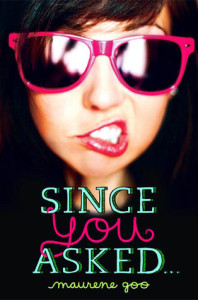 Since You Asked by Maurene Goo, which is one of the funniest books I’ve read in a long time, and one of the few I’ve ever found that’s focused on a Korean-American teen
Since You Asked by Maurene Goo, which is one of the funniest books I’ve read in a long time, and one of the few I’ve ever found that’s focused on a Korean-American teen
We Are the Ants by Shaun David Hutchinson, an excellent novel about a boy who has a strange and compelling connection to a spaceship full of aliens
Far From You by Tess Sharpe, a lovely and heartbreaking book featuring a bisexual main character and thrilling plotline
What are some of the inclusive YA titles you have on your to-be-read list?
So many! I’m dreadfully behind on my to-be-read list, but some books I own and am very much looking forward to reading are:
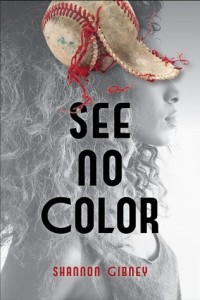 See No Color by Shannon Gibney
See No Color by Shannon Gibney
This Side of Home by Renée Watson
Gabi, A Girl in Pieces by Isabel Quintero
Untwine by Edwidge Danticat
Under a Painted Sky by Stacey Lee
Fake ID by Lamar Giles
X: A Novel by Ilyasah Shabazz and Kekla Magoon
Saving Montgomery Sole by Mariko Tamaki
You Know Me Well by Nina LaCour and David Levithan
I’m also looking forward to picking up Peas and Carrots by Tanita S. Davis, Honor Girl by Maggie Thrash, The Weight of Feathers by Anna-Marie McLemore, Outrun the Moon by Stacey Lee, and The Memory of Light by Francisco X. Stork.
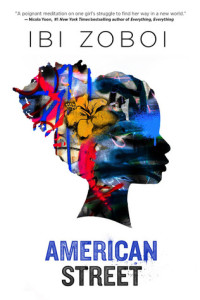 As for books that aren’t yet released, I’m quite eager to read: Dread Nation by Justina Ireland, The Education of Margot Sanchez by Lilliam Rivera, I Believe in a Thing Called Love by Maurene Goo, Dear Martin by Nic Stone, When Dimple Met Rishi by Sandhya Menon, Allegedly by Tiffany D. Jackson, American Street by Ibi Zoboi, and Piecing Me Together by Renée Watson, to name a few!
As for books that aren’t yet released, I’m quite eager to read: Dread Nation by Justina Ireland, The Education of Margot Sanchez by Lilliam Rivera, I Believe in a Thing Called Love by Maurene Goo, Dear Martin by Nic Stone, When Dimple Met Rishi by Sandhya Menon, Allegedly by Tiffany D. Jackson, American Street by Ibi Zoboi, and Piecing Me Together by Renée Watson, to name a few!
If you had to make a “must reads” list of inclusive titles, and maybe we can be really specific and say books by black authors or about black characters, what would they be? Why?
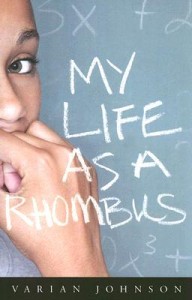 Kendra by Coe Booth
Kendra by Coe Booth
Charm & Strange and Delicate Monsters by Stephanie Kuehn
Brown Girl Dreaming by Jacqueline Woodson
My Life as a Rhombus by Varian Johnson
The Gaither Sisters series by Rita Williams Garcia (One Crazy Summer, P.S. Be Eleven, and Gone Crazy in Alabama)
Monster by Walter Dean Myers (I really enjoyed the graphic novel version that was published in 2015 and adapted by Guy A. Sims with gorgeous art by Dawud Anyabwile)
I’m sure I’ve forgotten a few titles, but to me, these books present authentic, varied portrayals of black American life and/or are written by storytellers I greatly admire.
“What’s up in YA?” readers include passionate YA fans, as well as gatekeepers like librarians, teachers, and others who work with teenagers. Tell us: how can we be better about talking inclusive YA? What sorts of ways can we share the stories that don’t always get the sort of coverage or discussion that others do?
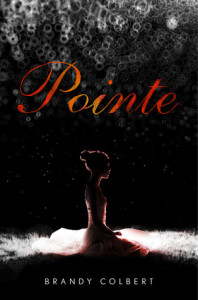 I’m lucky that my first novel, Pointe, gained a much larger readership because of word-of-mouth recommendations. I cannot stress enough how much word of mouth can help a book—if you like or love a book, tell everyone you think might be interested. Tell people who may not be initially interested but could use a break from what they normally read. Share your love on as many social media outlets as you can. Leave reviews in every possible place online, even for titles that have already been out for a while—years, even! Preorder inclusive titles that you’re interested in to show publishers there’s a demand for books that don’t already have a huge marketing push. Request inclusive titles at your local library if they’re not already on the shelves.
I’m lucky that my first novel, Pointe, gained a much larger readership because of word-of-mouth recommendations. I cannot stress enough how much word of mouth can help a book—if you like or love a book, tell everyone you think might be interested. Tell people who may not be initially interested but could use a break from what they normally read. Share your love on as many social media outlets as you can. Leave reviews in every possible place online, even for titles that have already been out for a while—years, even! Preorder inclusive titles that you’re interested in to show publishers there’s a demand for books that don’t already have a huge marketing push. Request inclusive titles at your local library if they’re not already on the shelves.
For people who organize book festival/conference panels, I’d urge them to look beyond the easy reaches and the authors they automatically go to when thinking of diversity. Look for people who write similar work, or are of the same background but write completely different books. Don’t keep asking the same people to be on panels—do the work of seeking out a variety of voices that need to be heard.
Finally, what sort of books do you think are missing from shelves right now? What stories aren’t out there yet — or haven’t been talked about much — that would fill much-needed holes on shelves? Personally, I’ve wanted nothing more than a take on the film “Save the Last Dance,” but from the perspective of Derek, the black boy.
Ooh, I’d like to see that, too! (But honestly, I’d like to see it even more from the perspective of his sister, Chenille, played in the film by the ever-flawless Kerry Washington.)
I’m actually not great at wish lists! If I don’t see it, I typically attempt to write it myself. I guess that overall I’d like to see more books with black kids who are allowed to mess up just as much as white kids without their mistakes defining them. I’ve been sensing lately that it’s a pretty heavy recurring theme in my own work and I’d be happy to see more of it on the shelves.
____________________
Thank you so very much to Brandy for talking about such a huge, meaty topic. I hope you have found a book or two or ten to add to your to-be-read pile and, perhaps, found a nugget of wisdom to bring into your reading and in sharing your love of books.
“What’s Up in YA?” will be back in two weeks with a big round-up of recent YA news. In the meantime, enjoy your reading.
Thanks for rocking out with us!
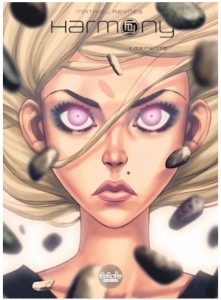 This week’s “What’s Up in YA?” newsletter is sponsored by Harmony from Europe Comics.
This week’s “What’s Up in YA?” newsletter is sponsored by Harmony from Europe Comics. 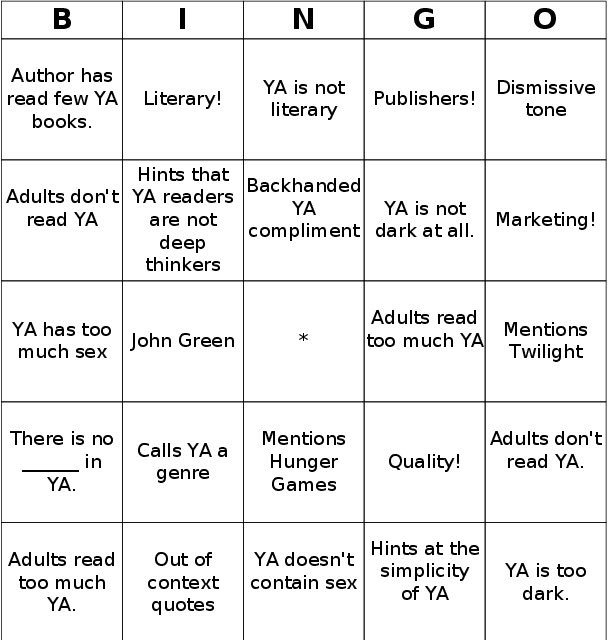
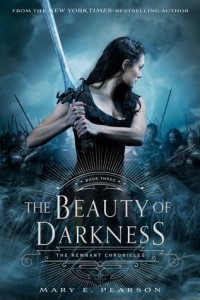 This week’s newsletter is sponsored by Mary E. Pearson’s
This week’s newsletter is sponsored by Mary E. Pearson’s 
 Welcome Brandy Colbert, acclaimed author of
Welcome Brandy Colbert, acclaimed author of  Regarding the lack of diversity within diversity, I do think things are getting better, if one book at a time. Nicola Yoon’s
Regarding the lack of diversity within diversity, I do think things are getting better, if one book at a time. Nicola Yoon’s 
 See No Color
See No Color
 Kendra
Kendra I’m lucky that my first novel,
I’m lucky that my first novel, 